Unpacking should be the best part of the entire moving process. No, really!
You’ve already coordinated all of the logistics of renting a truck and hiring Helpers, you’ve packed everything up, moved, and unloaded your rental truck. Now all that’s left to do is go through all of your boxes and get everything in its place so you can enjoy your new home!
So why do some people still dread unpacking? Well, imagine sitting amongst a mountain of boxes with no clue what’s inside any of them or where everything is going to go. Okay … yeah, that does sound pretty dreadful. But it doesn’t have to be that way! By planning your unpack, you can save time, money and headaches.
How to Make Unpacking Easier Before Moving Day Happens
We all know the quote, “If you fail to plan, you plan to fail.” The most important step to a smooth unpacking experience is proper planning before your move.
Of course, you’ll have some planning to do if you’re booking movers and renting a truck … but you still need to spend some time packing. And no, we’re not talking about randomly throwing items into boxes and calling it a day.
Here are some things you should do before moving day to make unpacking easier.
Take Photos Before You Start Packing
Before you touch anything, we want you to take out your phone and have a little home photo shoot.
Here are things you especially need photos of:
- Bookshelves
- The back of your TV
- Kitchen drawers
- Desk area
- Tool shed
We urge you to snap pics of the areas in your home that you love! We know all too well how long it can take to get a shelfie looking just the way you want it. By snapping some reference pics now, you’ll be able to replicate that new look in your home in no time.
Create a Number and Color-Coded System For Your Boxes
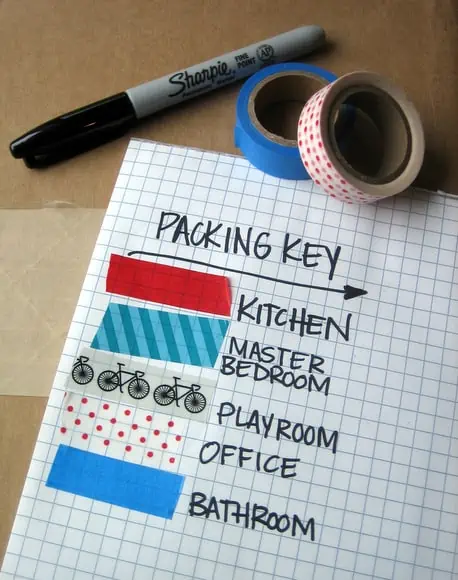
Try to only pack up items from one to two rooms inside every box. This will make your life much easier when it’s time to unpack later.
Got a bunch of stuff on shelves? Create a numbered system to remember where everything goes. That way it’s easier to get them unpacked and into their new permanent spots.
And we can’t forget our favorite tip of all … our color-coded box system. With this technique, you get to use our most beloved crafting tool—washi tape! Get the full instructions from this post, but the short version is that you need to separate your boxes by the room, marked with bright washi tape so your movers know exactly where to deliver them. Genius and oh so colorful!
Make it Much Easier to Unpack Essentials
There are 7 items you’ll want to have on hand for moving day, but we also think you should create a box of moving day essentials. Because imagine the night of moving day when you’re tearing open boxes trying to find pajamas, your toothbrush, and your medication for the night. Sounds like a disaster to us.
This is what should go in your “Moving Day Box” so you don’t have to tear through your moving truck:
- A change of clothes
- Utensils
- Toiletries
- Prescriptions
- Phone charger
Be sure to label this box and keep it near you!
Get Help Unloading Your Rental Truck
See prices for movers by the hour—instantly.
Read real customer reviews.
Easily book your help online.
Clean The 5 Most Important Things
We know you have approximately 10,000 things to do to get your rental deposit back. But trust us, now is the time to give your new place a thorough cleaning because it’s empty. You simply put items in place rather than cleaning and unpacking at the same time. Want to know the five most essential things to clean?
- Kitchen cabinets
- The Refrigerator (and refrigerator fan)
- Bathtub and any tub jets
- Outside (and Inside) the stove
- Washing machine
Unpacking Tips
You’ve done the prep work (even the cleaning, you rockstar, you!), and now moving day is here! Even if you hired help for your unload (great call), there are still things you can do to make unpacking time a little easier.
Place Your Boxes in Rooms by Color

Protip: Get your “Moving Day Essentials Box” opened right away so you have everything you need to make it through the next day or two.
Use Washi Tape to Figure out Your Furniture Layout
As long as your movers are there, have them get your furniture in the spot where you want it! We love the idea of using painter’s tape to mark out the layout of furniture right on the floor.
Before you move (or even while your movers are bringing things in and out), go around your place and put tape on the ground to outline your furniture. That way the movers will know exactly which wall to put your bed on and where that long dresser goes. You can always move things later on, but getting items in the correct space will make your life a lot easier in the coming days.
Unpack the Bathrooms and Bedrooms First
Moving day will be exhausting, so if you’re going to unpack anything immediately, make sure it’s your bed and bedding. Once your movers get the mattress into place, find the sheets, comforter and pillow and make your bed. If you have kids, do theirs too. Having a comfy spot to sleep at the end of the long day will feel amazing!
Unpack your bathroom boxes too. That way you’ll have all of the toiletries and medications on hand for the night and morning. A fresh shower after a long day of moving will be heavenly, trust us!
Save the Kitchen for Tomorrow
The kitchen is the most time intensive room to unpack, due to the amount of tiny and heavy items, so don’t unpack it on moving day. Your brain will be tired by the end of moving day, and you’ll want to be refreshed and recharged before you tackle this space. Save the kitchen until morning when you can make a fresh pot of coffee.
How to Stay Organized After Moving Day

Avoid Distractions, Don’t Unpack Games or TV
We might suggest making a playlist of music to entertain you, but we don’t think you should get your TV setup and turned on right away. You may find yourself sitting on the couch instead of unpacking if you have a TV show or movie on. So much temptation…
Another distraction? Little ones. You’ll additionally want to make a plan for your pets when you’re moving and unpacking, so they don’t get in the way. The same goes for kids. Have a plan to keep them occupied or if you can, drop them off at grandma’s house so you have uninterrupted time to unpack. It’s all about keeping the distractions to a minimum so you can devote enough hours to get your house in tip-top shape!
Unpack Only One Room at a Time
Instead of hopping from space to space, we suggest making a list of your rooms in order of importance. Then, don’t move onto another space until the one you’re on is done.
The kitchen, bedrooms and kids’ rooms should be up high on the priority list, while the guest room and garage may not need TLC right away. Also, make sure you have furniture and appliances setup before you get too carried away going through boxes. Did you clean your counters first? You’ll want to have spots to put all of the items as you whip them out of the boxes, so having dressers and cabinets ready to go is a must!
Break Down Boxes as You Go, in Real Time
As you unpack boxes, it may be easy to just throw empty ones in a big corner. But trust us, that pile will quickly get out of control and soon you won’t be able to walk around your house without an empty box tumbling down on you. Take one box and make it the designated paper box. As you unpack boxes, crumple up the paper and shove it into that box. Then, be sure to break down boxes as you unpack. You’ll want to have a utility knife on hand so you can do this quickly.
(And Don’t Unpack Everything)
There may be some boxes that don’t actually need to be unpacked. We’re looking at you, Christmas decorations. Make a large pile of items that may be heading to storage or the garage. Then be sure to get those items to that space in the coming days.
What to Do After You’re Unpacked
You’ve made it! You survived moving day and every box in your place is unpacked. You should be feeling pretty darn good about yourself right about now, but the fun isn’t over just yet. There are still a few things you can do to really get your unloading and packing done.
Make Use of Those Moving Boxes
If you will be moving again soon, then you may want to hang onto some of the boxes that are still in good condition. Organize your boxes and find a spot to neatly tuck them away. Are you thinking, “What the heck do I do with all of that cardboard?!” Don’t fret! Instead, try out some of the cardboard hacks.
- Holiday Cardboard Hacks
- Halloween Costumes Made from Cardboard
- Cardboard Box Hacks for Kids
- More Genius Halloween Costumes
If getting creative with cardboard isn’t your speed, you can recycle your moving boxes. Check out this searchable database that’ll let you know the closest place to recycle anything (including moving boxes!). Just be sure to set a deadline for yourself to get those moving boxes out of your new place, so they don’t stay piled in the garage forever.
Use These Organization Protips
We’re all guilty of just shoving random items into a cabinet or closet and calling it a day. But to really feel settled in your new home, be intentional with what goes where. Check out this post on how to organize house keys:
Whenever we’re on an organization spree, we go room by room with a notepad and write down areas that need our attention. Then we’ll spend 30 minutes each night giving those spots some TLC. Those short increments of time seem much more doable than an entire day spent organizing an entire home.
Let the Decorating Begin! (In a Month)
We always say that you need to live in your home for a while in order to decorate it well. So many people quickly buy furniture and accessories for their place without ever giving each room a test run, and they end up with design regret. Yep, don’t paint the walls until you’ve spent a little time in your new place!
We promise that you’ll make much smarter decor decisions after 2-3 months.
Here’s how to get started when it’s time to begin:
- Digitally “Try on” New Furniture in Your Space
- Paint Your Walls Using Colors With the Best Resale Value
- Add the Right Accessories Throughout Your New Home
It may not seem like it, but unpacking can be the best part of the moving experience! We promise that these tips will make your unpacking experience easier and more efficient.
The sooner you unpack, the sooner you can enjoy your new life!

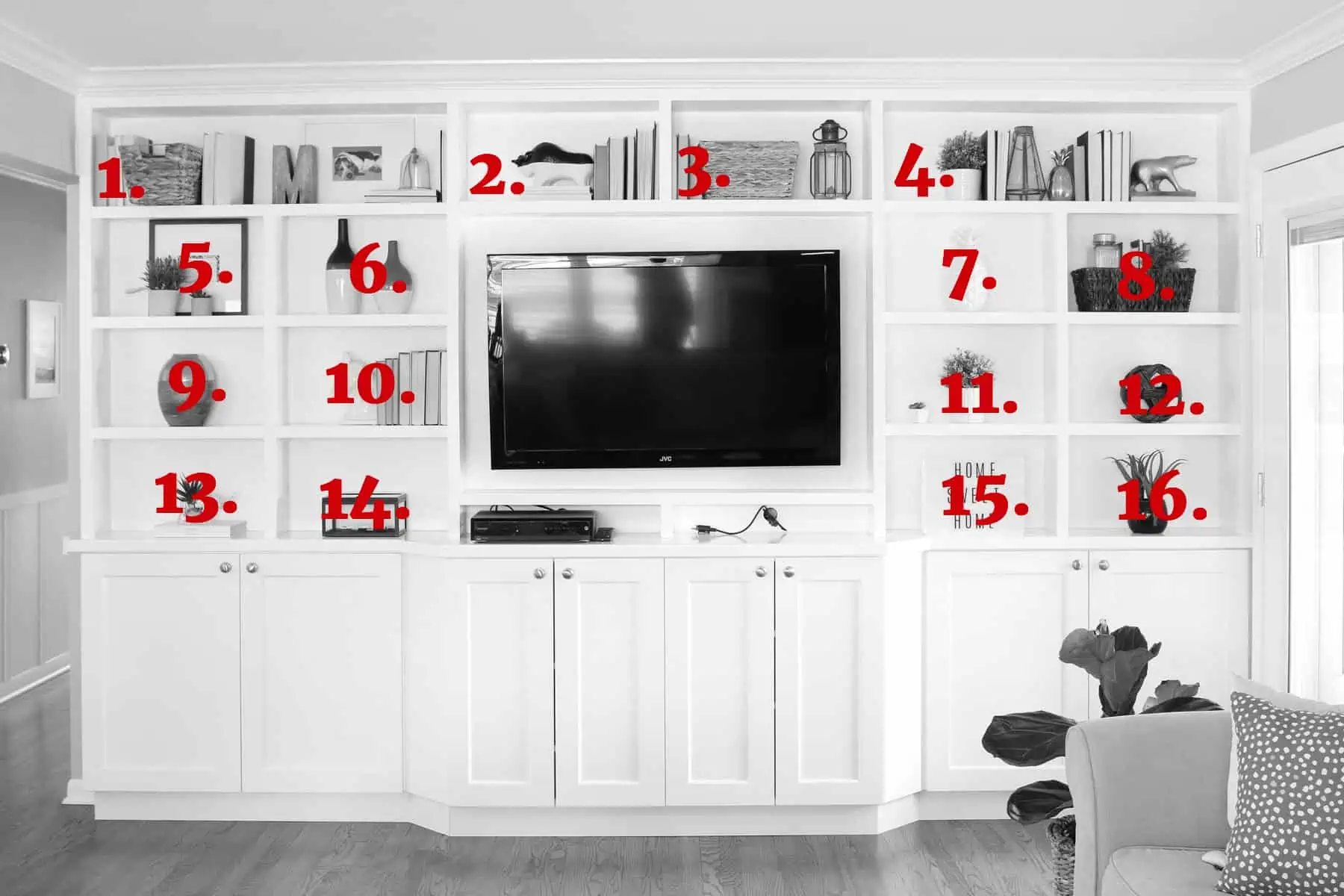

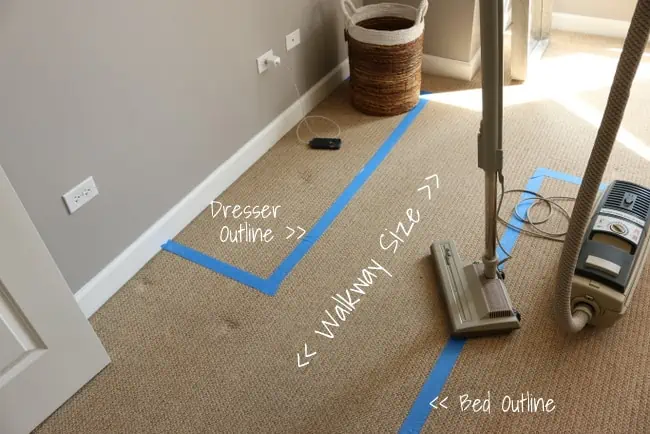


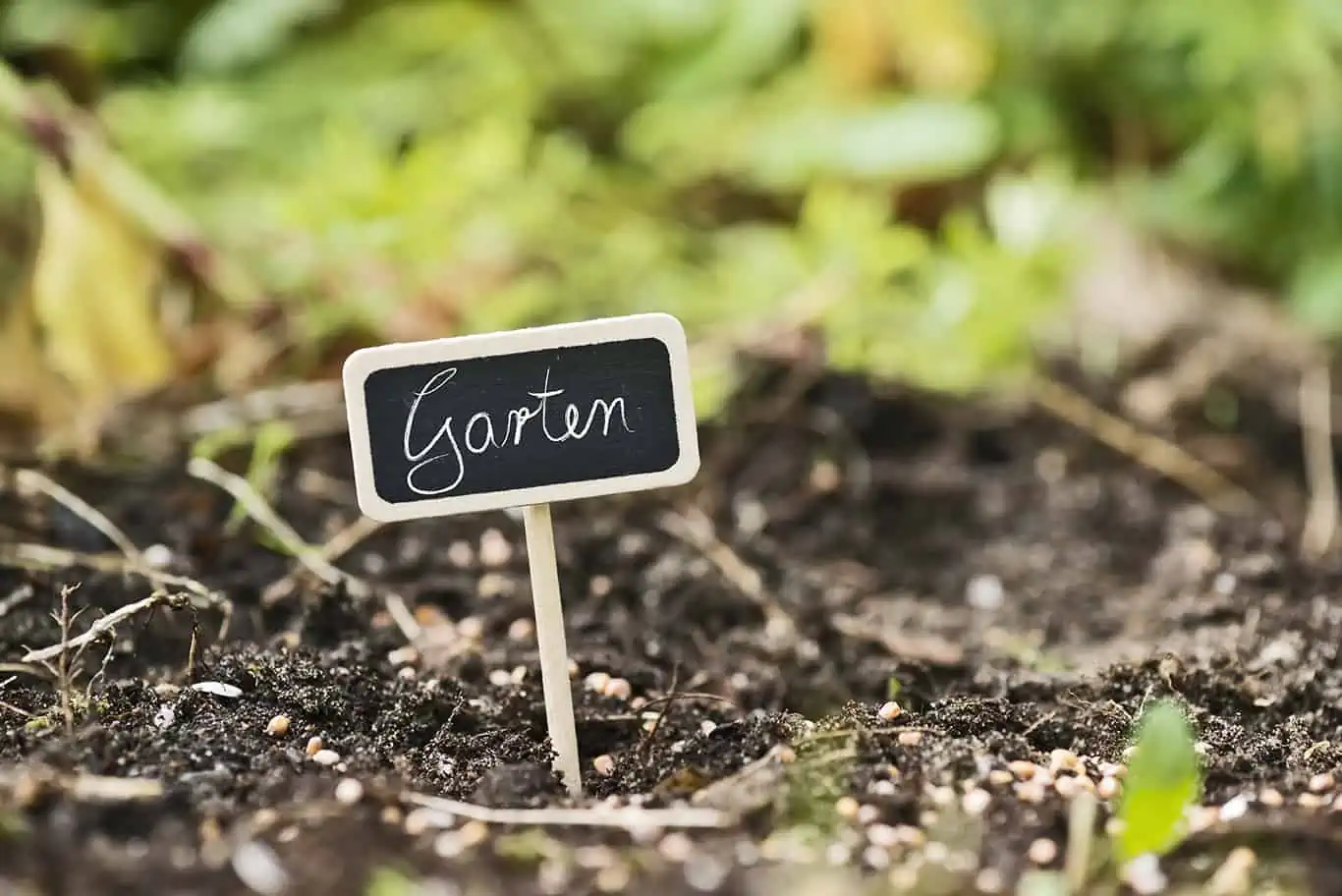

 If you are moving your garden from one pot to another or if you are moving your potted plants into the ground, skip this step. But if you are moving your garden from one home to another, then you’ll need receptacles that can be also be moved. If basic pots or buckets aren’t available, wrap the root ball in burlap for transporting. The shock of moving is enough to kill a good deal of plants, so it’s important to make sure the transport goes as smoothly as possible.
If you are moving your garden from one pot to another or if you are moving your potted plants into the ground, skip this step. But if you are moving your garden from one home to another, then you’ll need receptacles that can be also be moved. If basic pots or buckets aren’t available, wrap the root ball in burlap for transporting. The shock of moving is enough to kill a good deal of plants, so it’s important to make sure the transport goes as smoothly as possible. 

 You want to plant your garden in its new location as soon as possible. We would suggest doing it right after you are done uprooting them. If that isn’t possible, then quickly get them into their temporary, transitional home. Just remember, the longer the plant is out, the harder it will be to set.
You want to plant your garden in its new location as soon as possible. We would suggest doing it right after you are done uprooting them. If that isn’t possible, then quickly get them into their temporary, transitional home. Just remember, the longer the plant is out, the harder it will be to set. 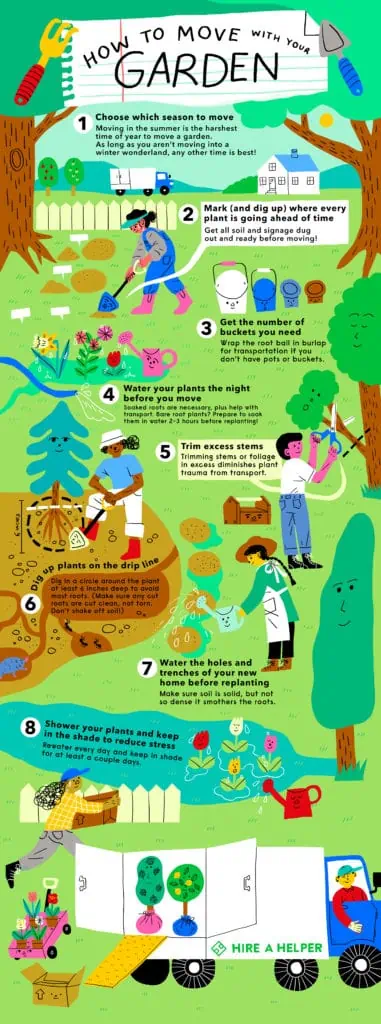


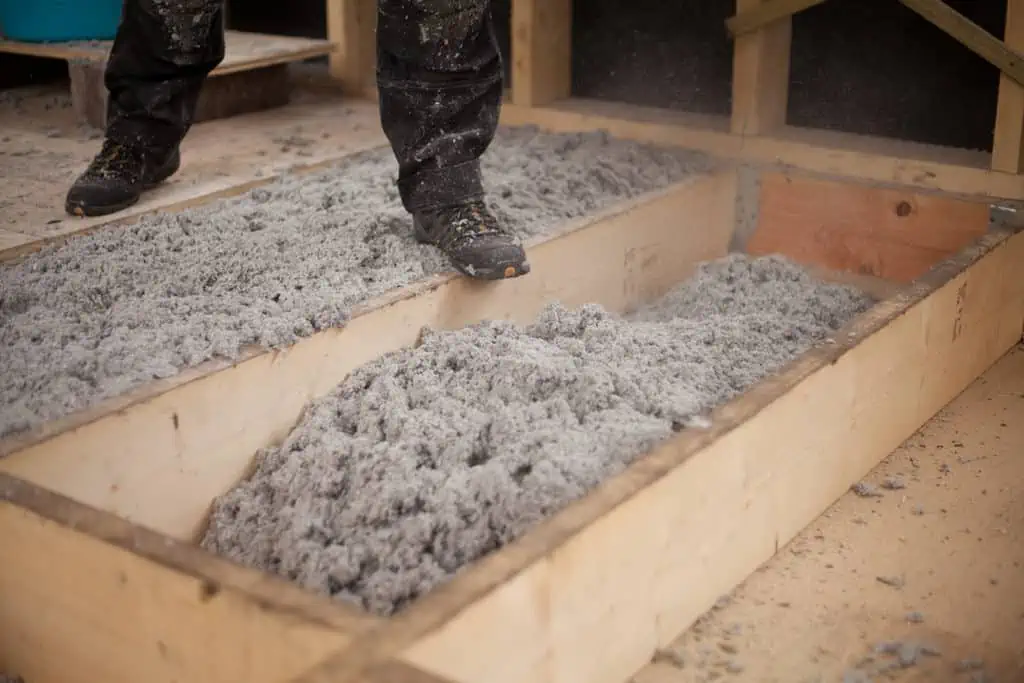
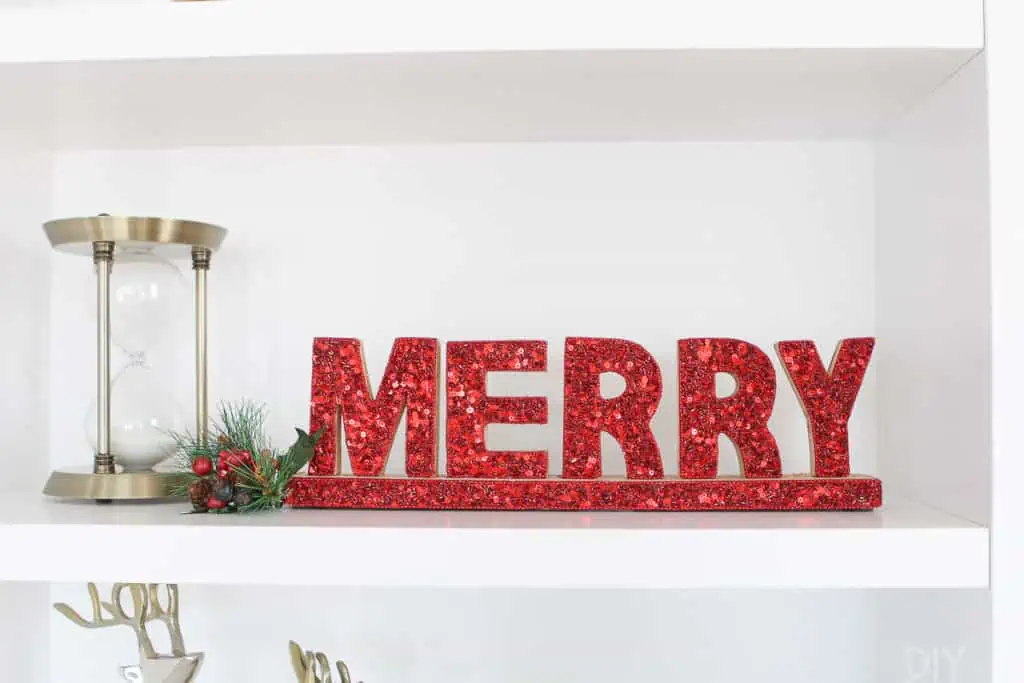

 This tip may seem a little silly, but it’s actually a great one! If you’re an Amazon Prime enthusiast like us, then you probably get packages on the reg. Save a few of these shipping boxes, then use them as holiday decor.
This tip may seem a little silly, but it’s actually a great one! If you’re an Amazon Prime enthusiast like us, then you probably get packages on the reg. Save a few of these shipping boxes, then use them as holiday decor.

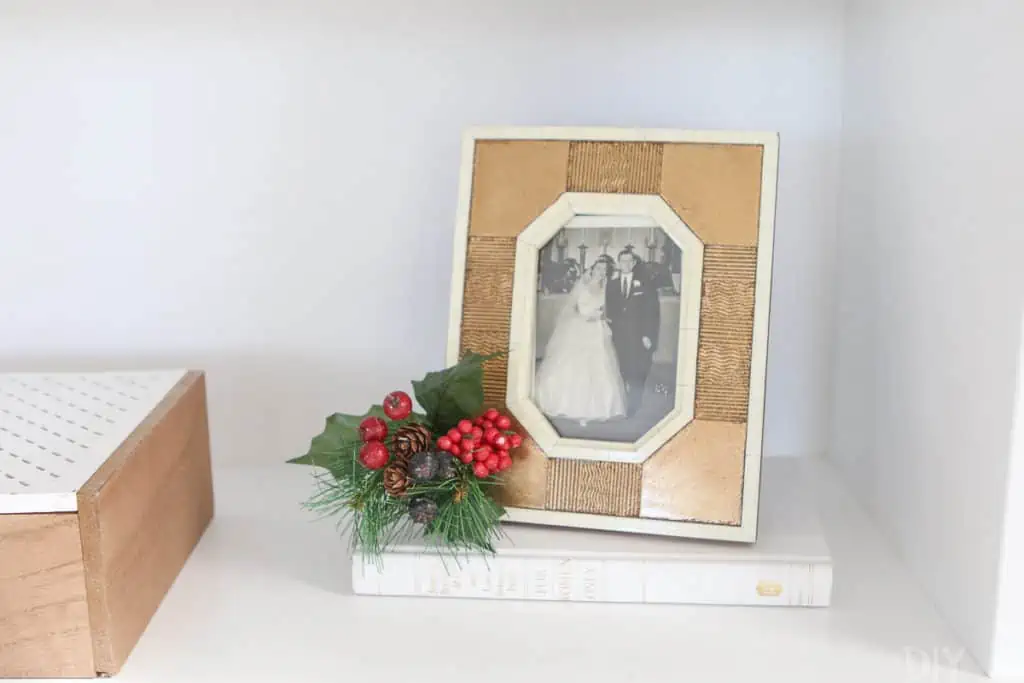
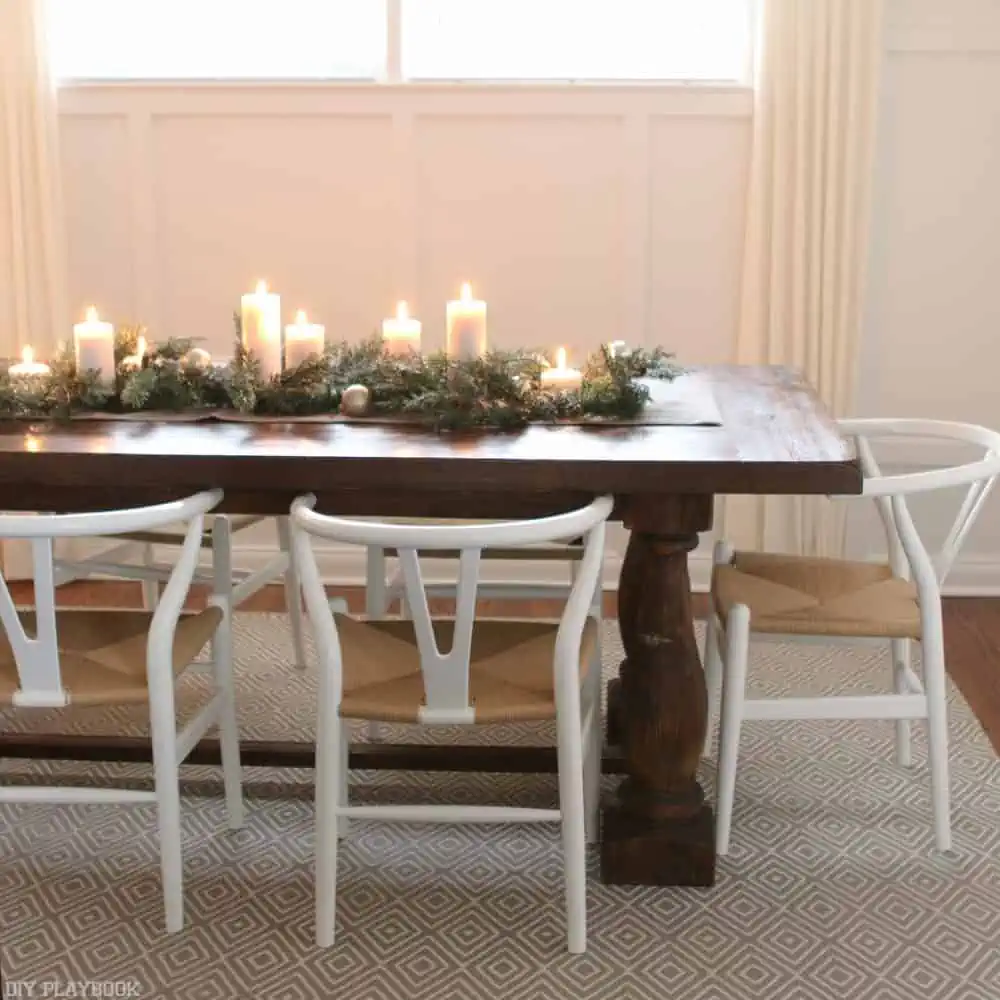 During the holiday season, we’re at the craft store just about every weekend. (Seriously.) And the one thing we recommend everyone picks up is some faux greenery. You can buy a bunch of small pieces for a steal and this greenery can be used all over your home.
During the holiday season, we’re at the craft store just about every weekend. (Seriously.) And the one thing we recommend everyone picks up is some faux greenery. You can buy a bunch of small pieces for a steal and this greenery can be used all over your home.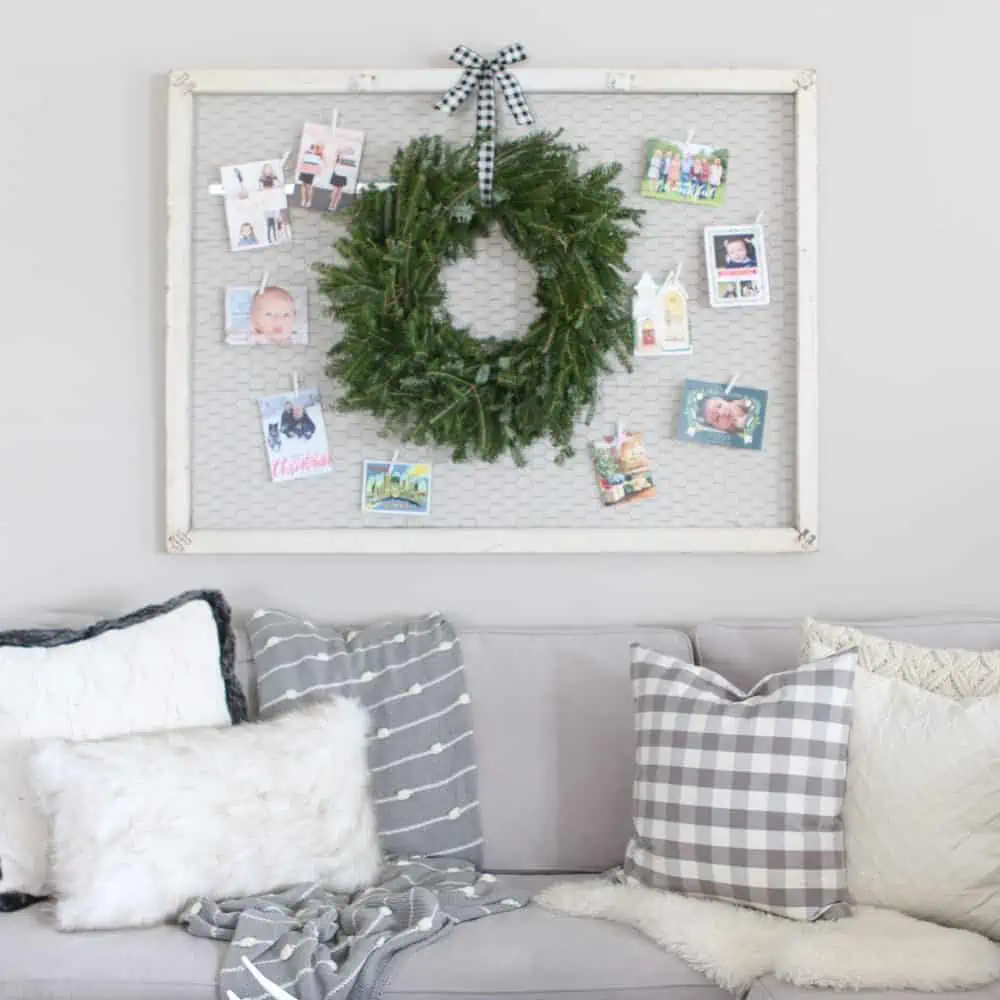
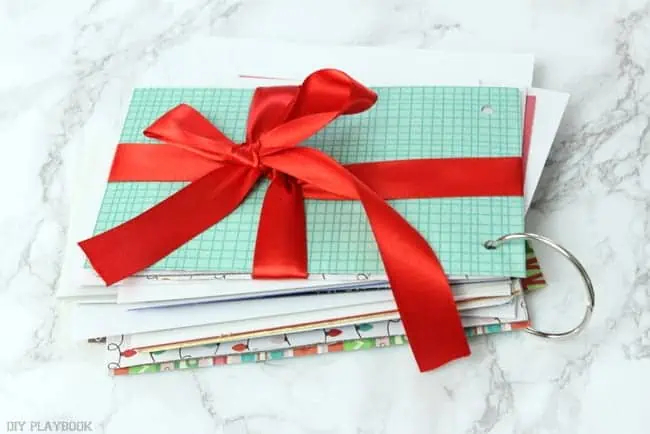 One of our favorite parts of the holiday season is all of the snail mail we receive. Instead of just throwing your holiday cards in a pile on your kitchen counter, get creative!
One of our favorite parts of the holiday season is all of the snail mail we receive. Instead of just throwing your holiday cards in a pile on your kitchen counter, get creative!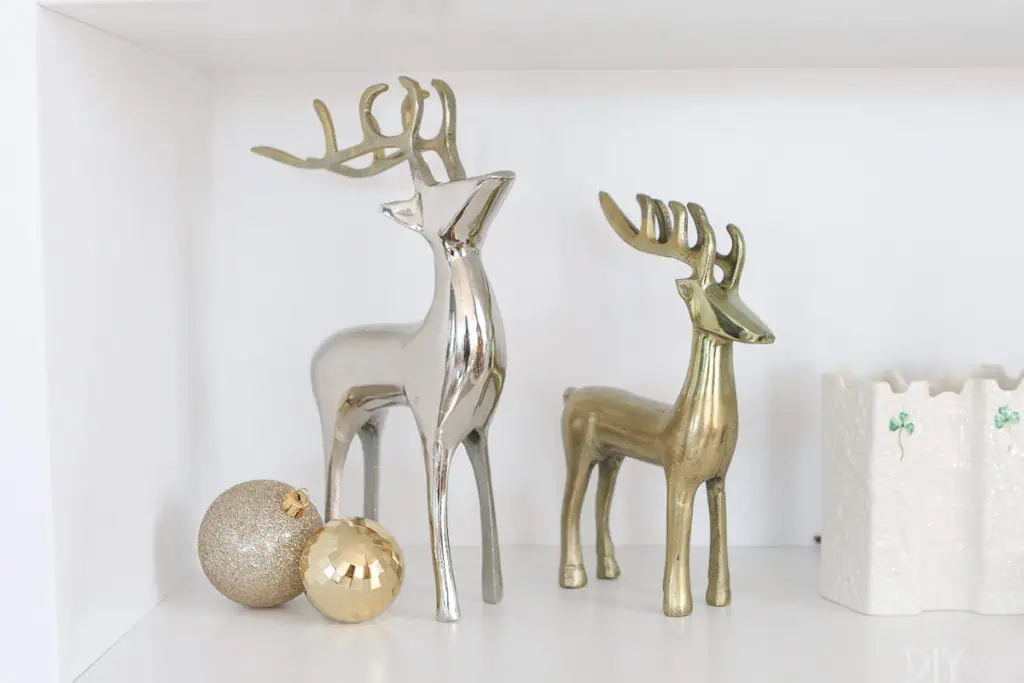
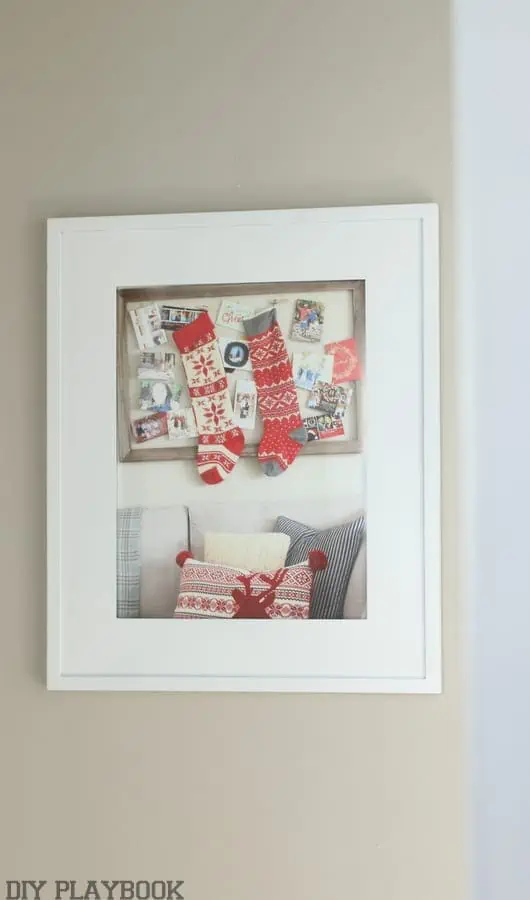
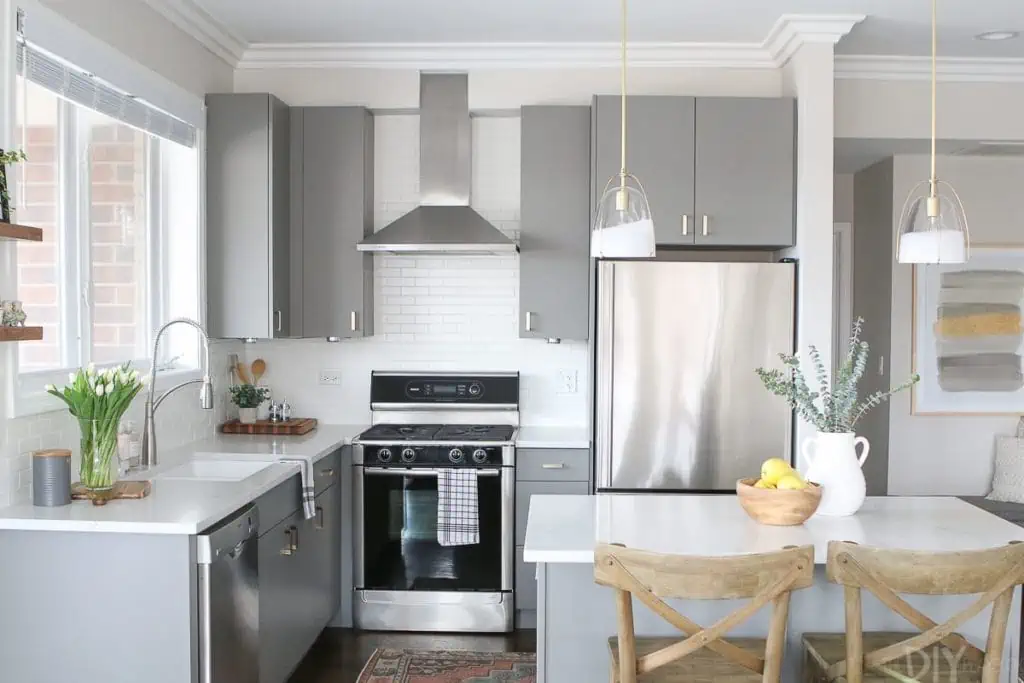
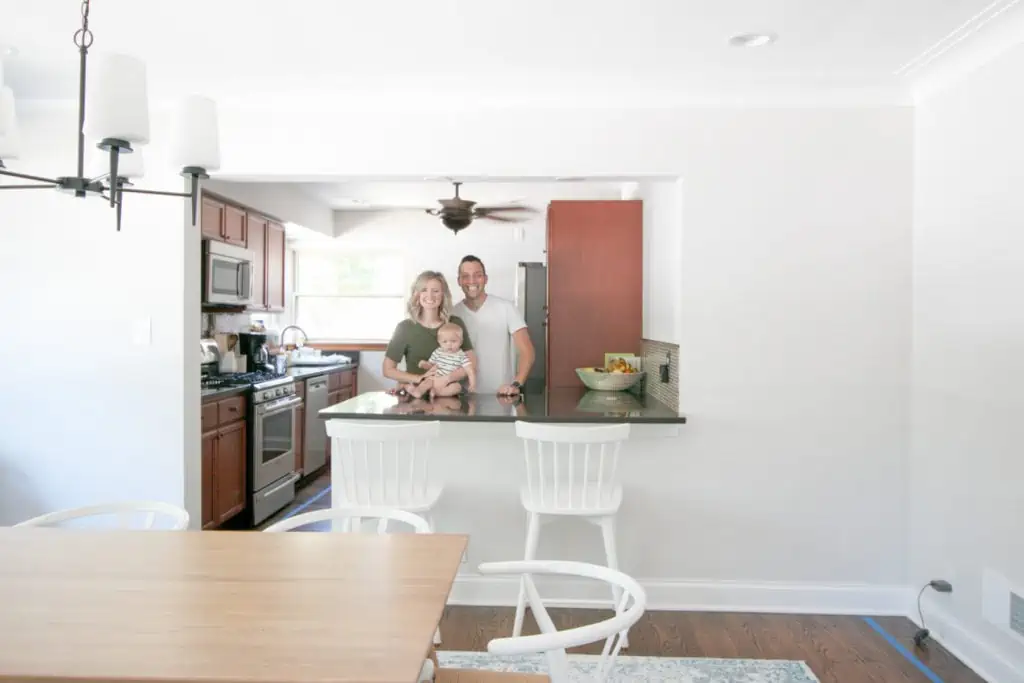
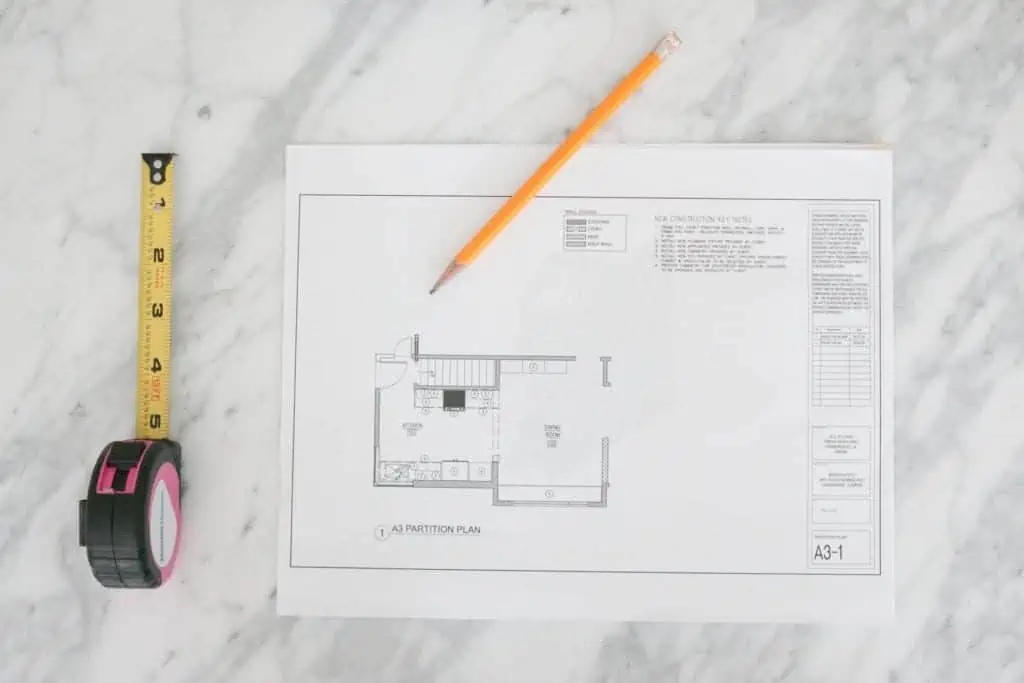
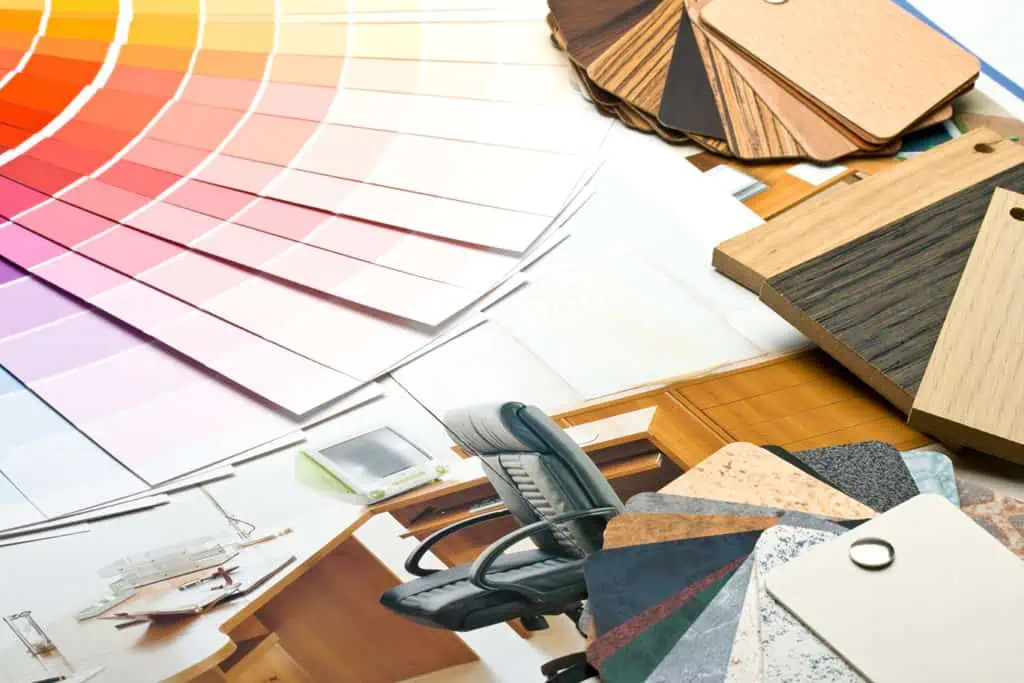
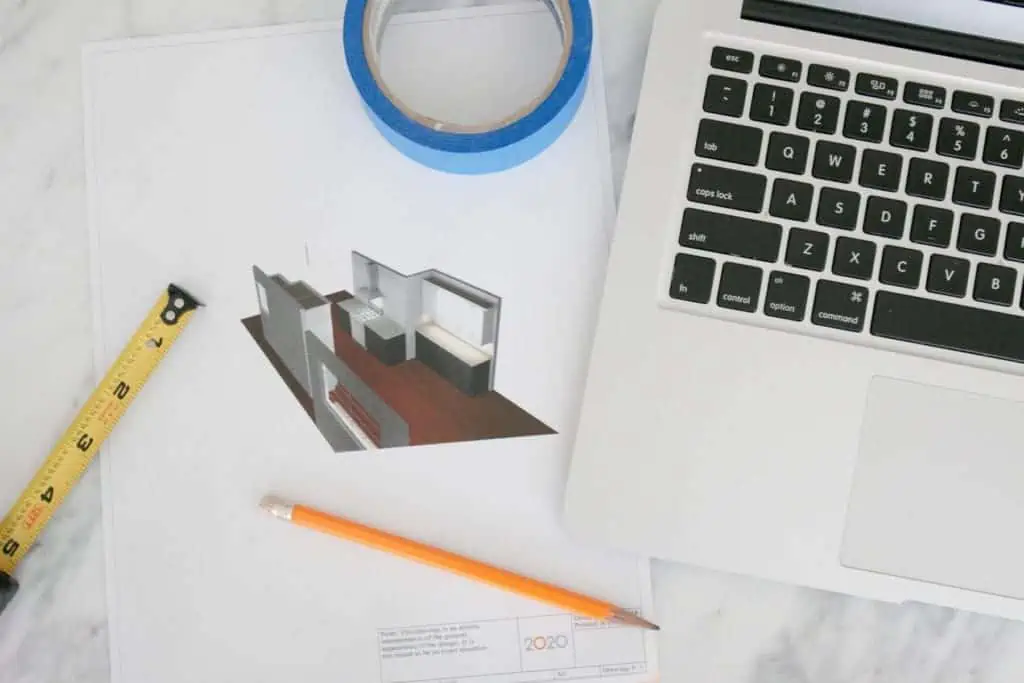
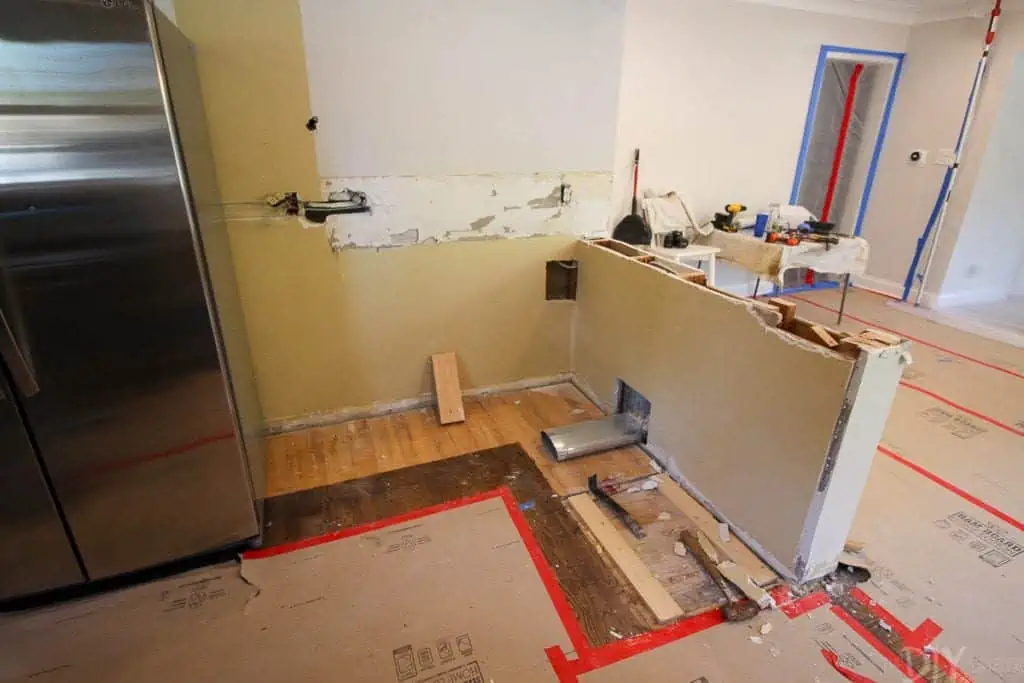

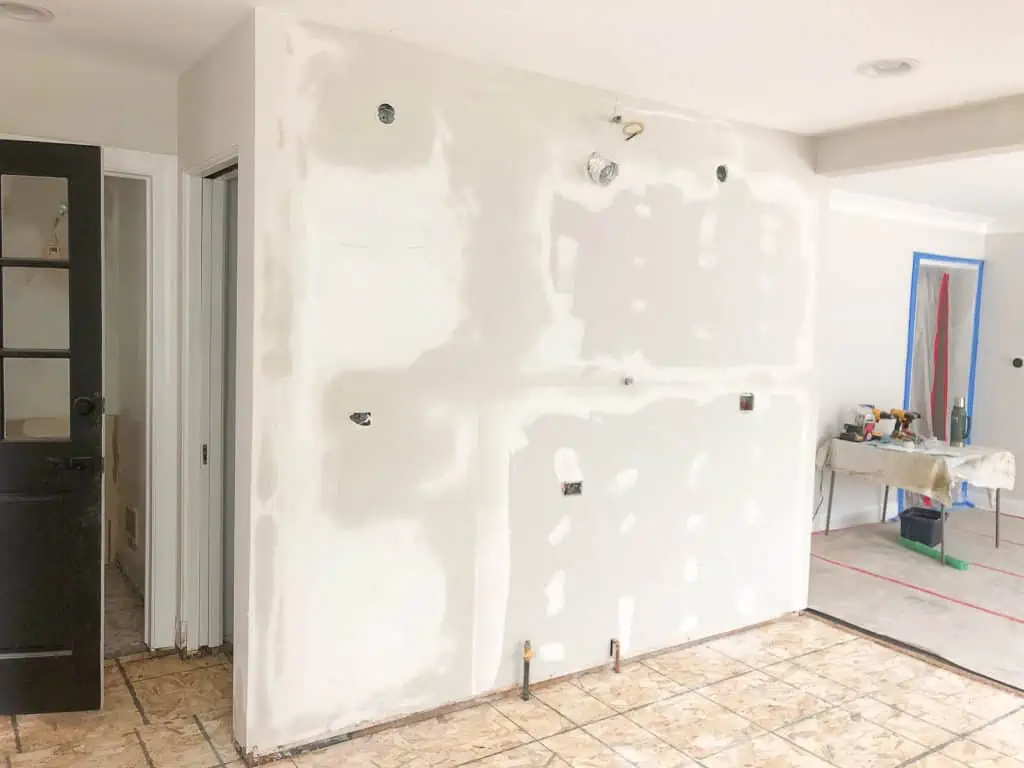
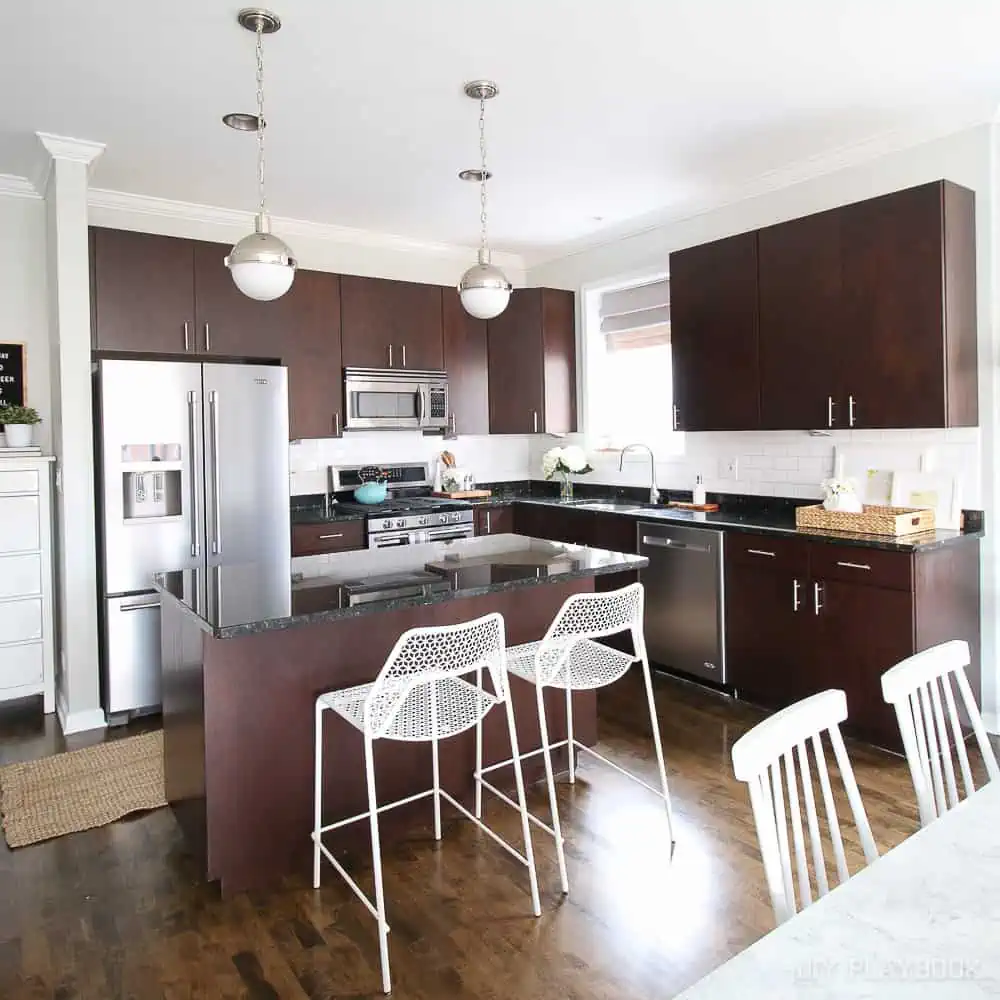



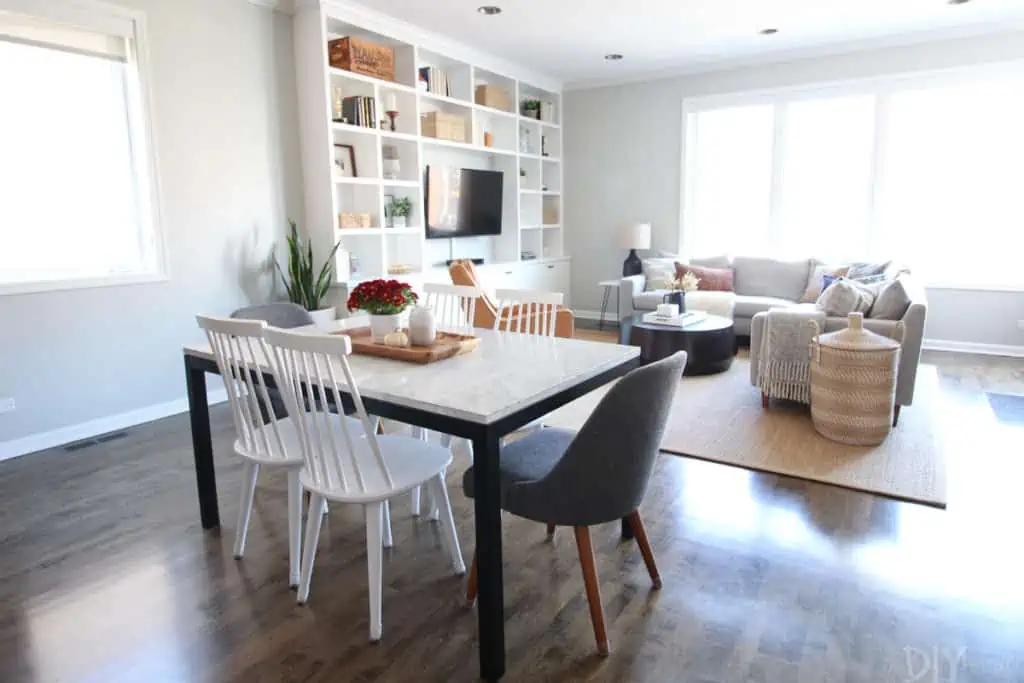
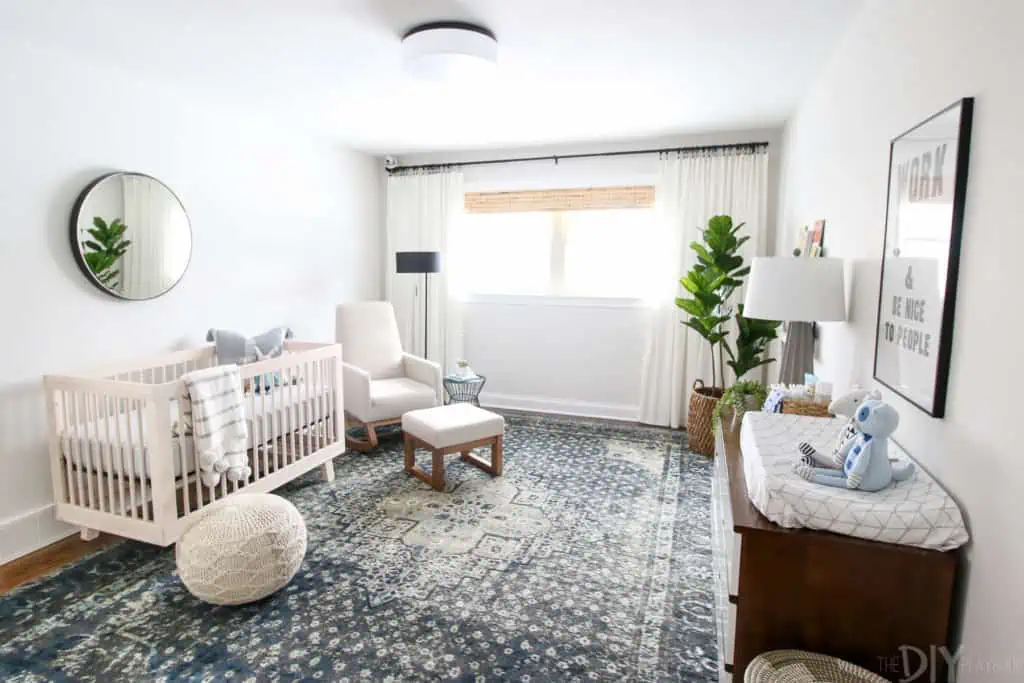
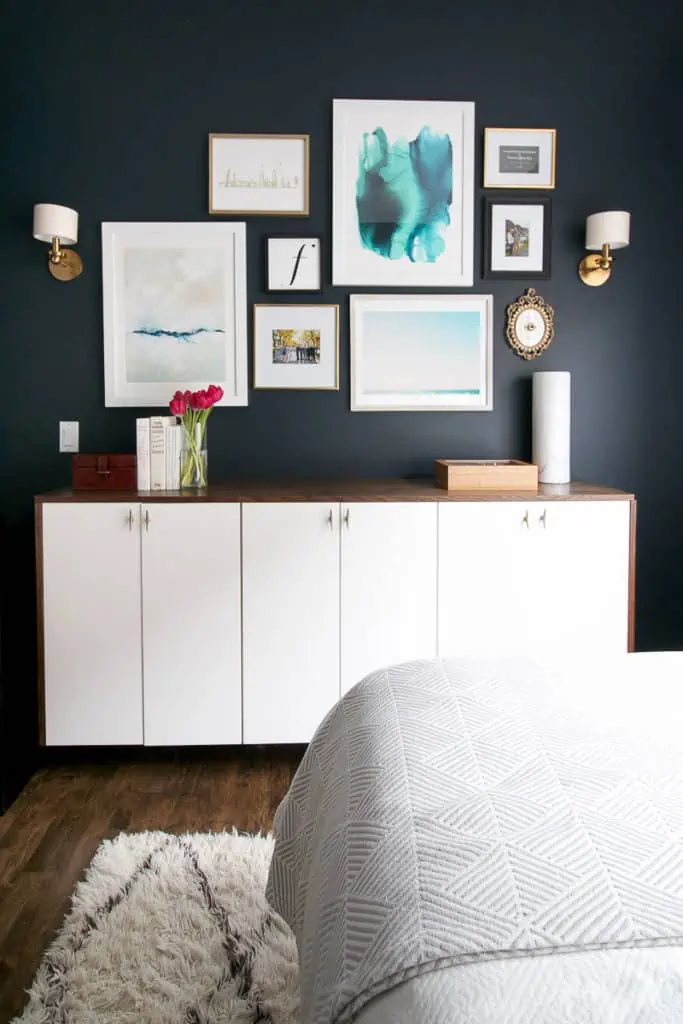
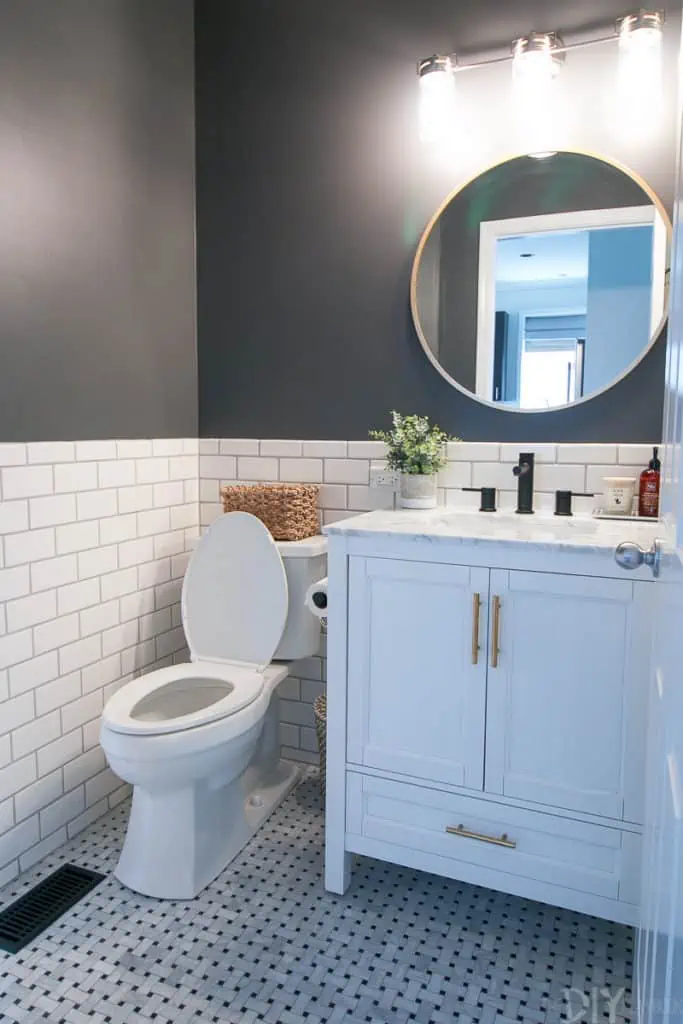
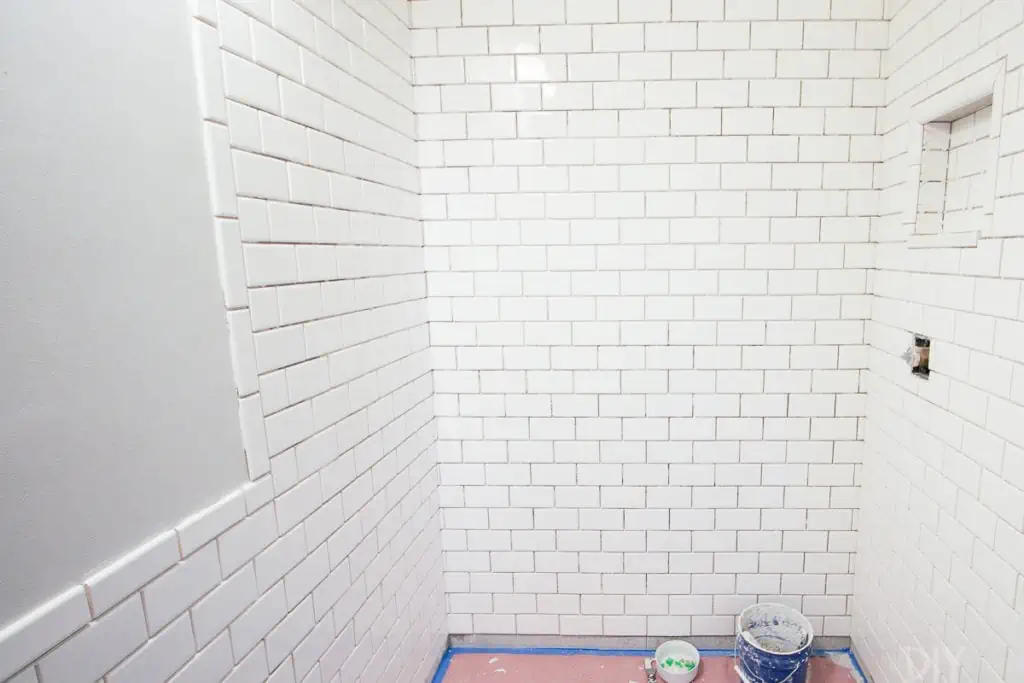
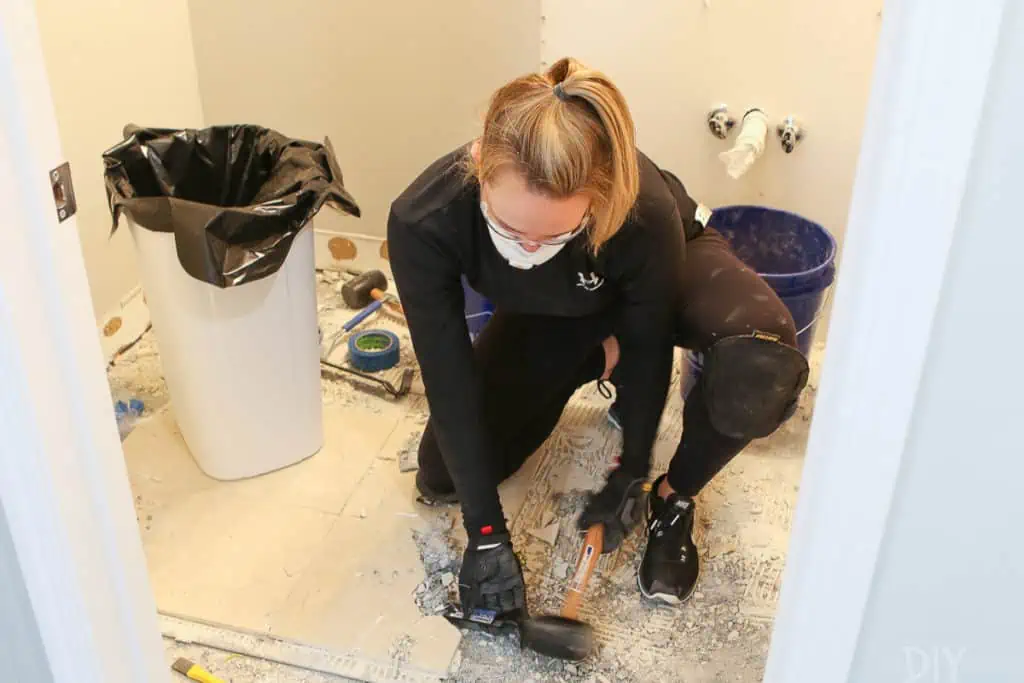
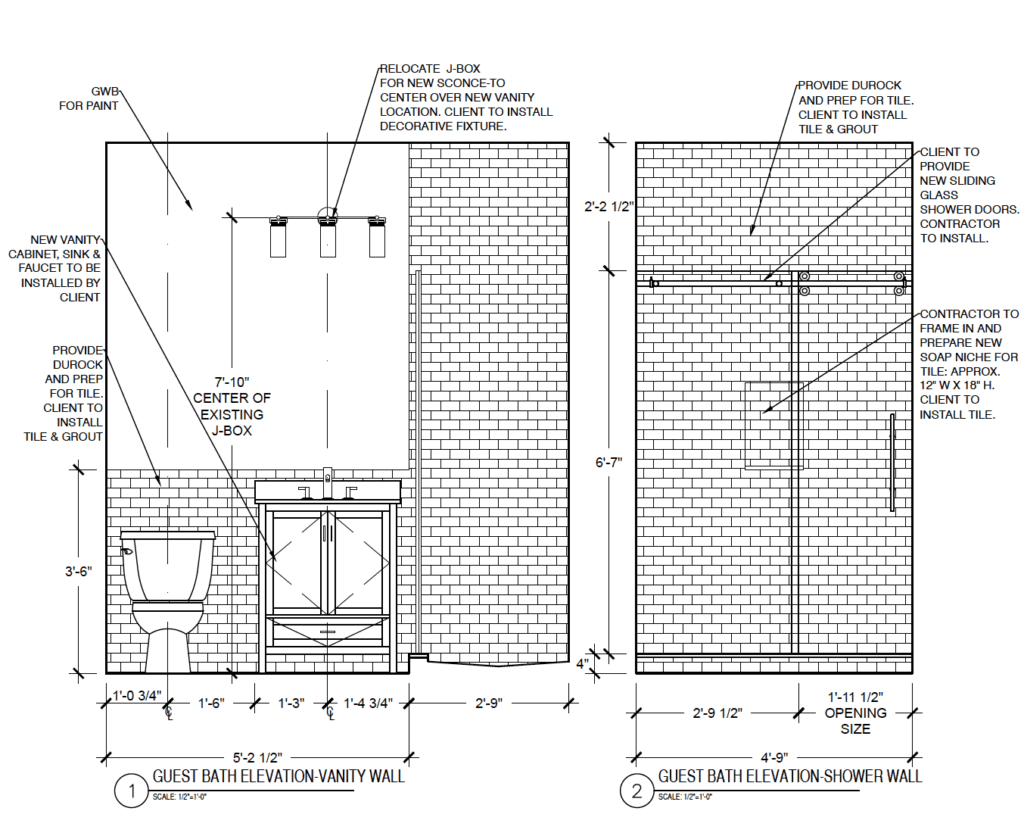
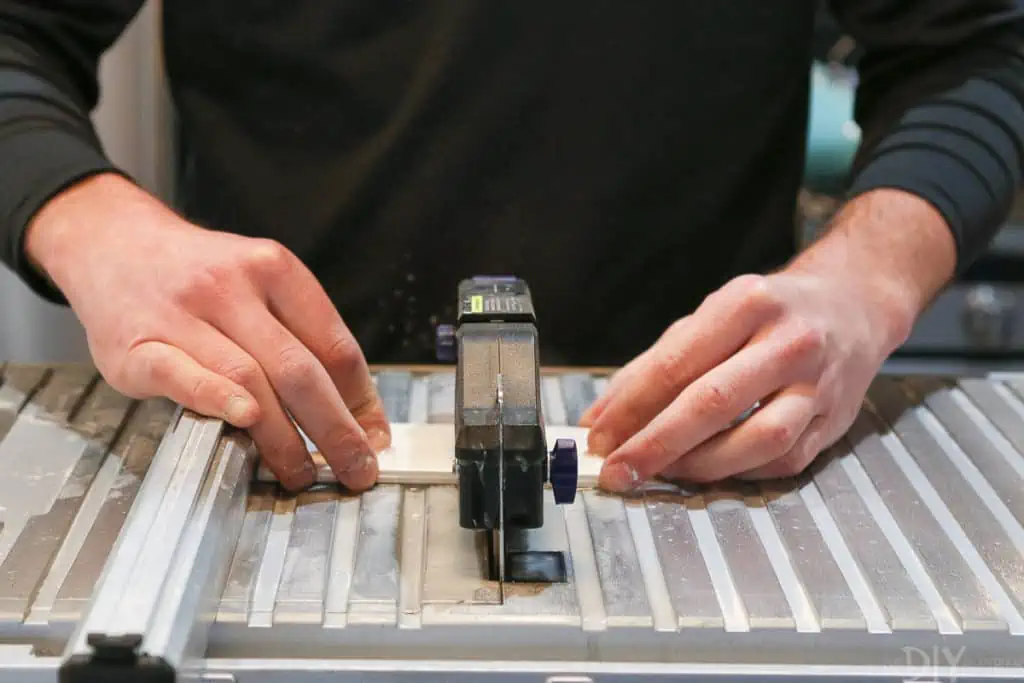
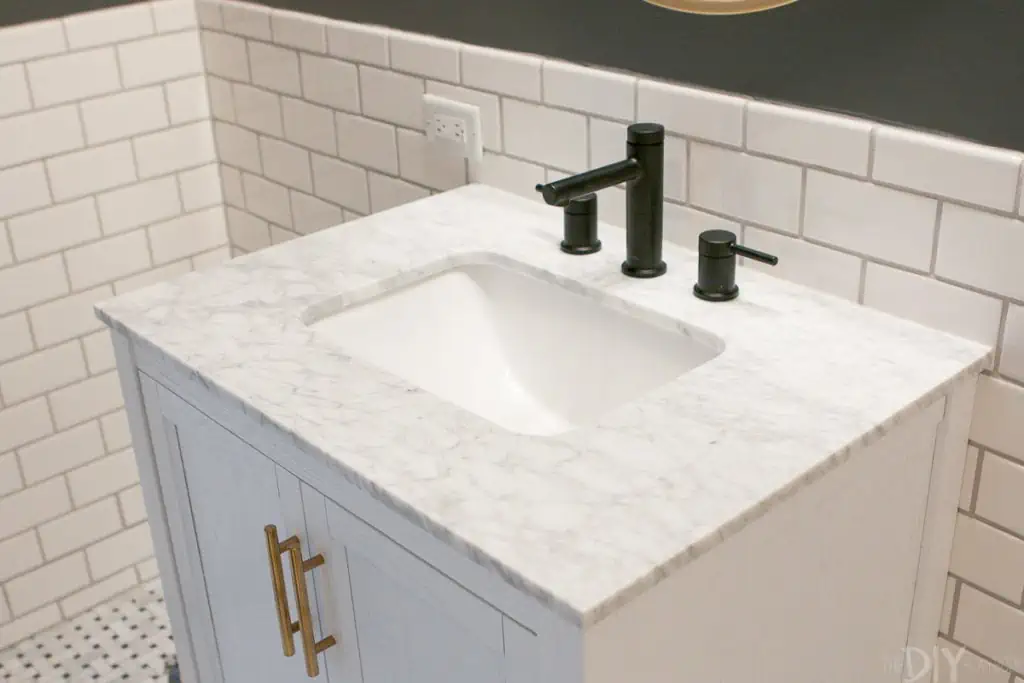 If you take away one piece of advice from this entire article, I hope it’s this next part: Order all of your products now and do not start your renovation until everything has arrived.
If you take away one piece of advice from this entire article, I hope it’s this next part: Order all of your products now and do not start your renovation until everything has arrived.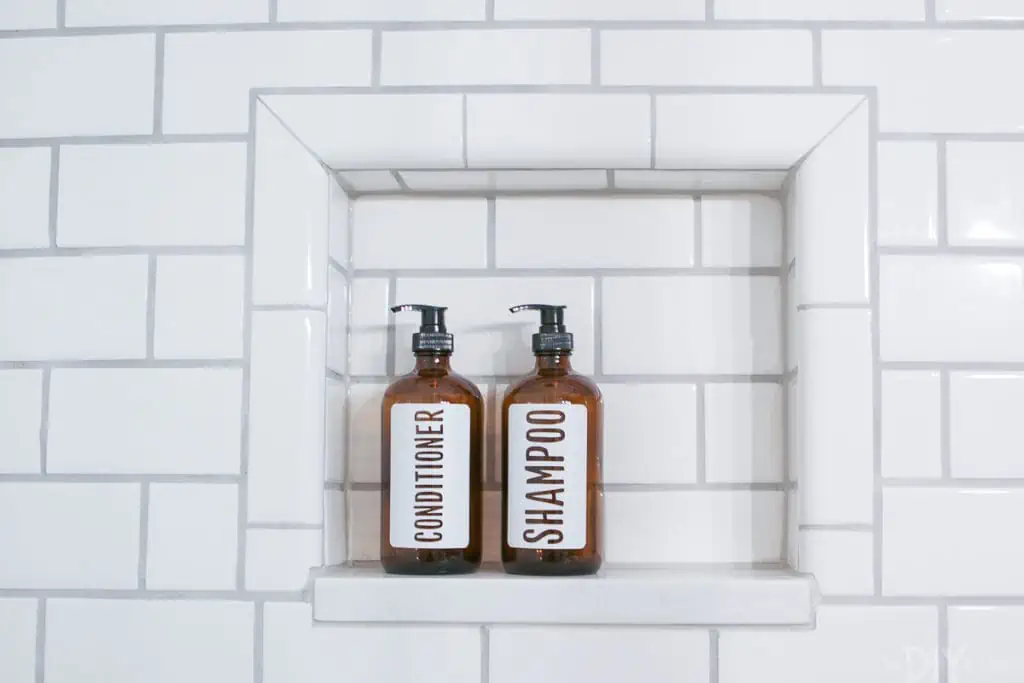 Now that all of your product is ordered (and arriving soon!), you can create a bathroom renovation timeline. Communicate this timeline with everyone involved in the project … your contractor, designer, spouse, family members, etc.
Now that all of your product is ordered (and arriving soon!), you can create a bathroom renovation timeline. Communicate this timeline with everyone involved in the project … your contractor, designer, spouse, family members, etc.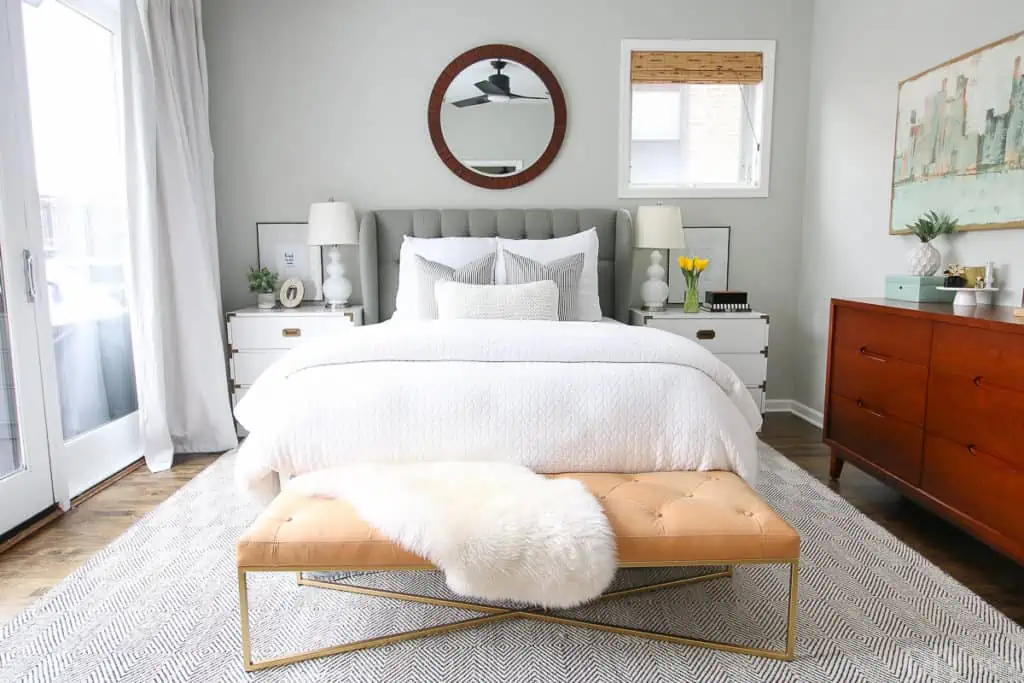
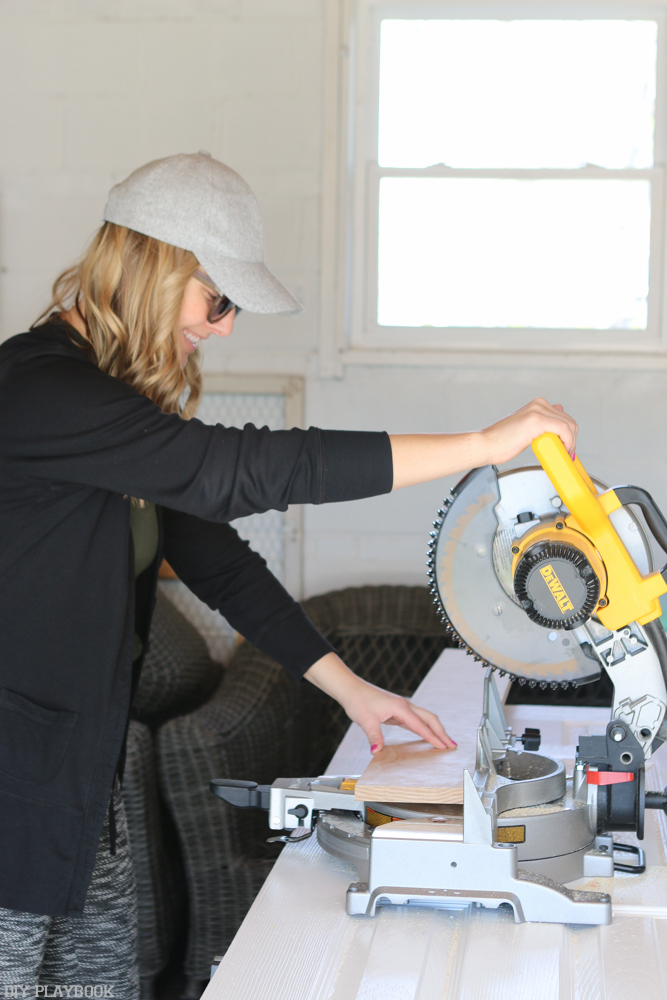
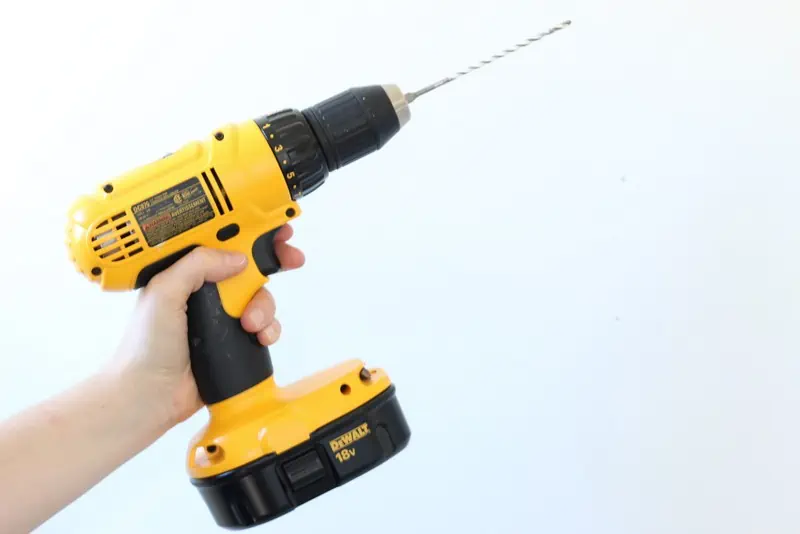
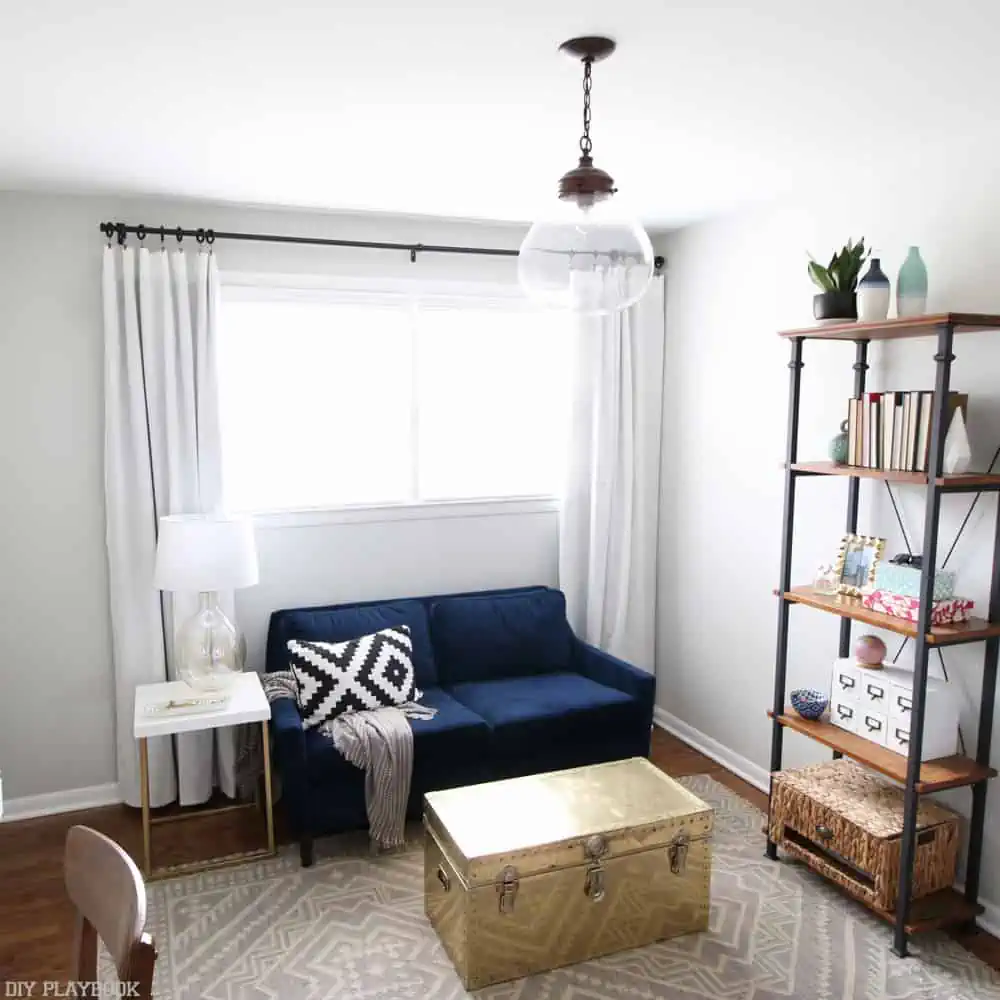 Shopping Tip: Power is measured by battery voltage and ranges from 6-18V. Higher voltage models come with extra power but are quite a bit heavier. We suggest going with a nice, middle-of-the-road 12V cordless drill.
Shopping Tip: Power is measured by battery voltage and ranges from 6-18V. Higher voltage models come with extra power but are quite a bit heavier. We suggest going with a nice, middle-of-the-road 12V cordless drill.
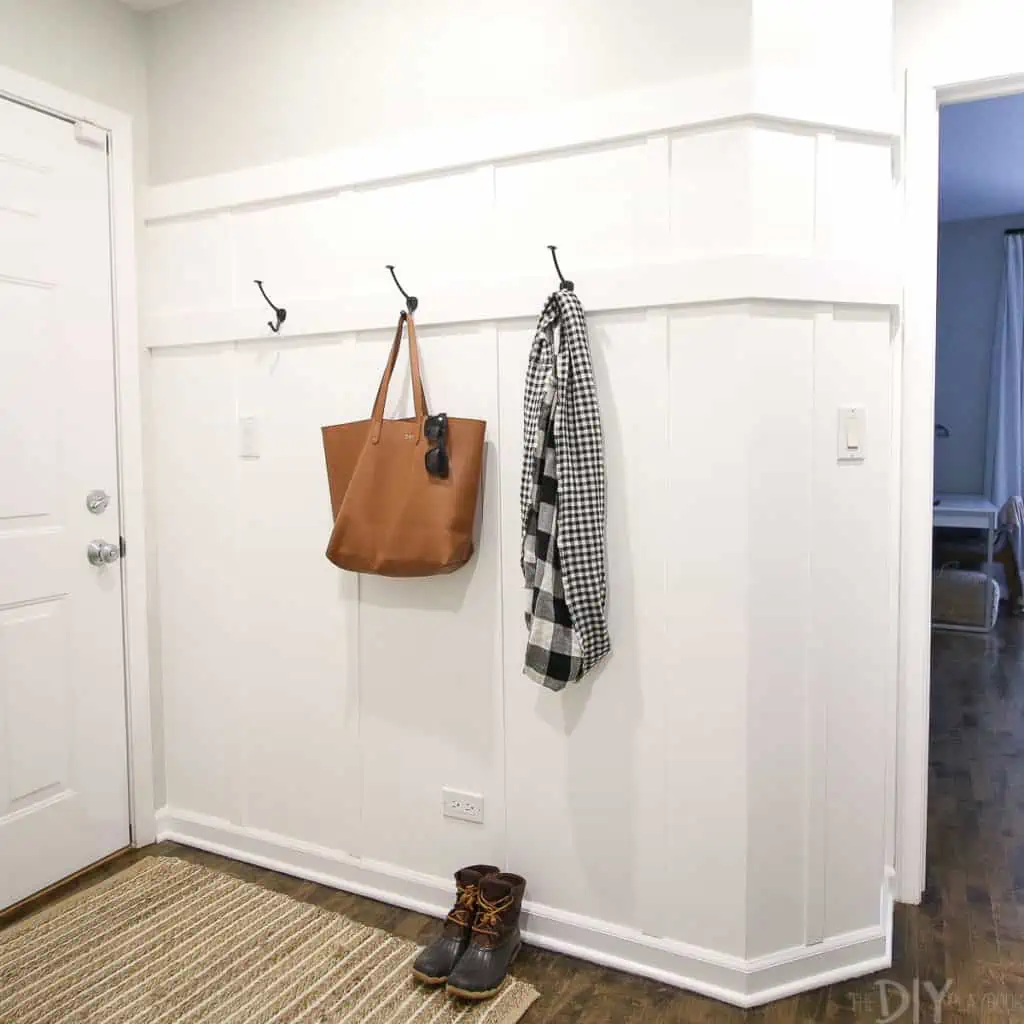 Yep, larger blades allow for longer cuts. We have a
Yep, larger blades allow for longer cuts. We have a 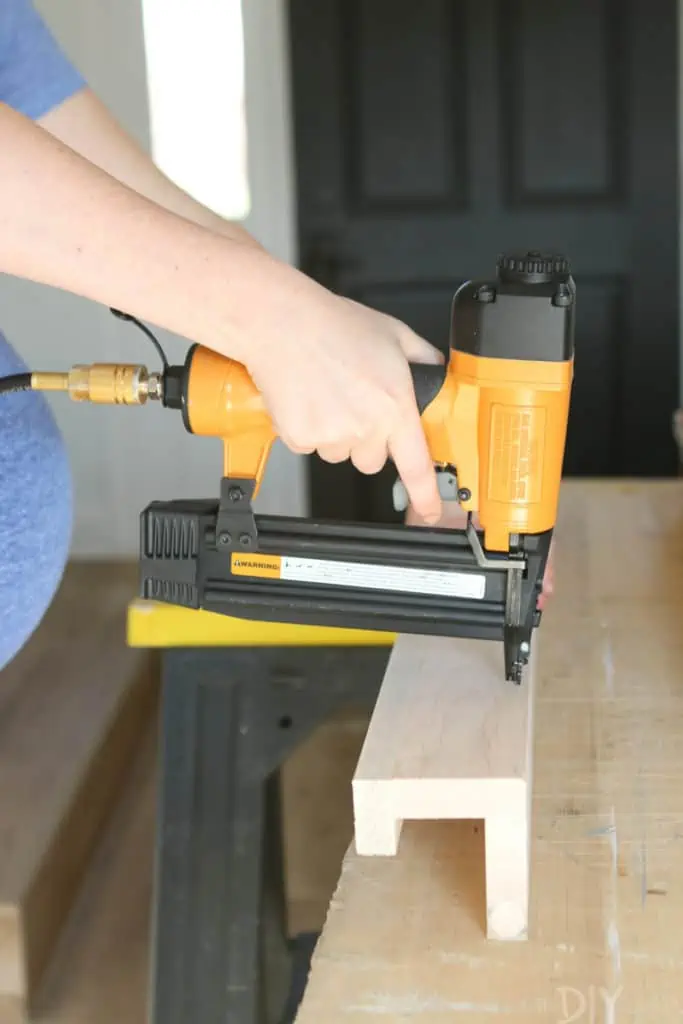
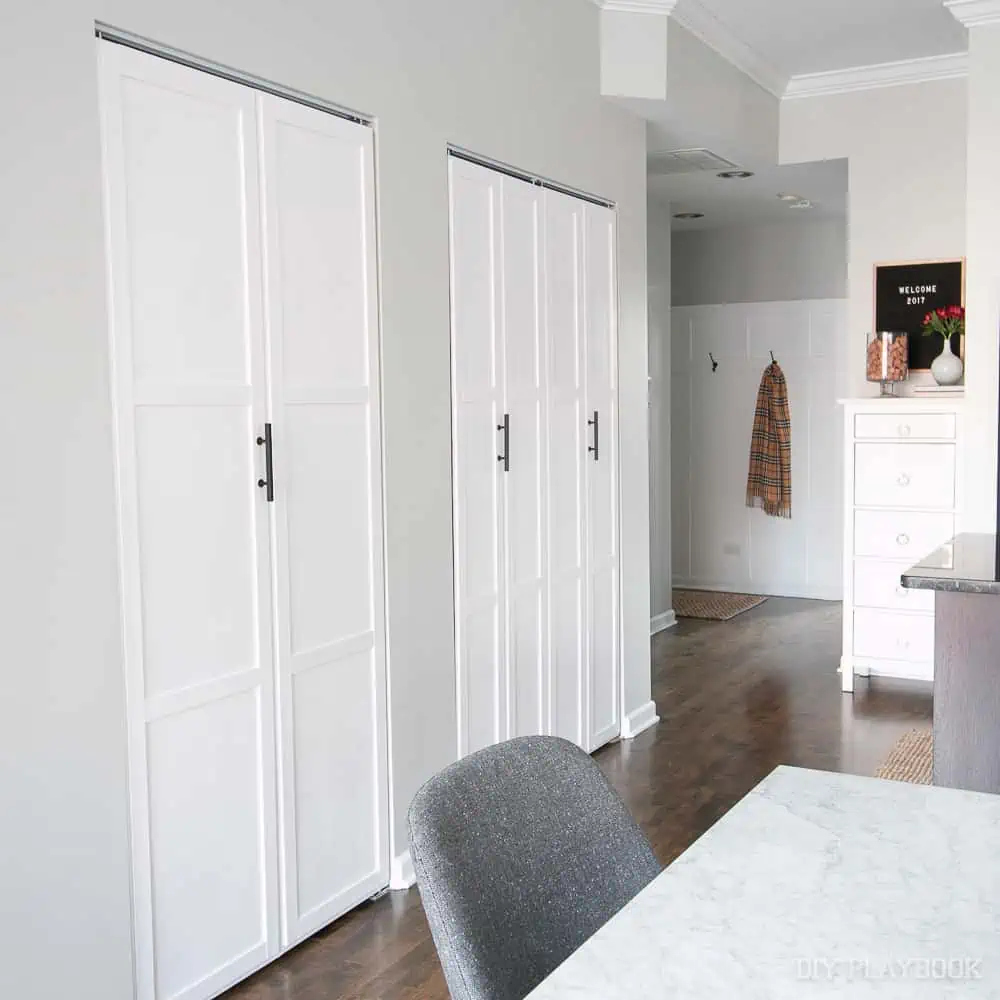 Shopping Tip: Nail guns can be gas-powered or air-powered, but we suggest going with an air-powered one. (Here’s
Shopping Tip: Nail guns can be gas-powered or air-powered, but we suggest going with an air-powered one. (Here’s 
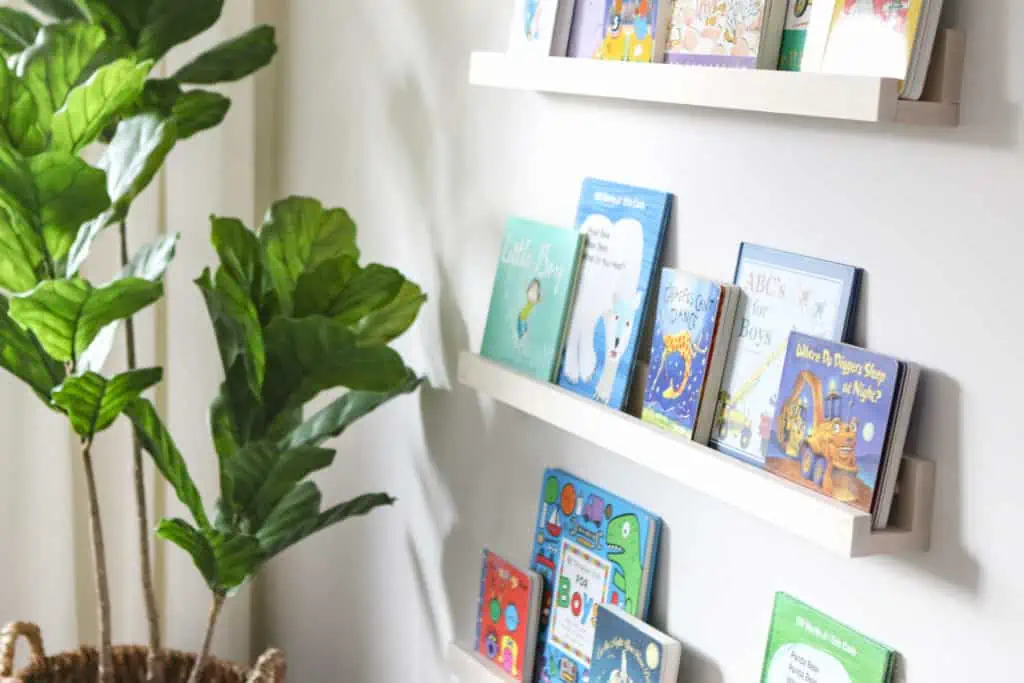

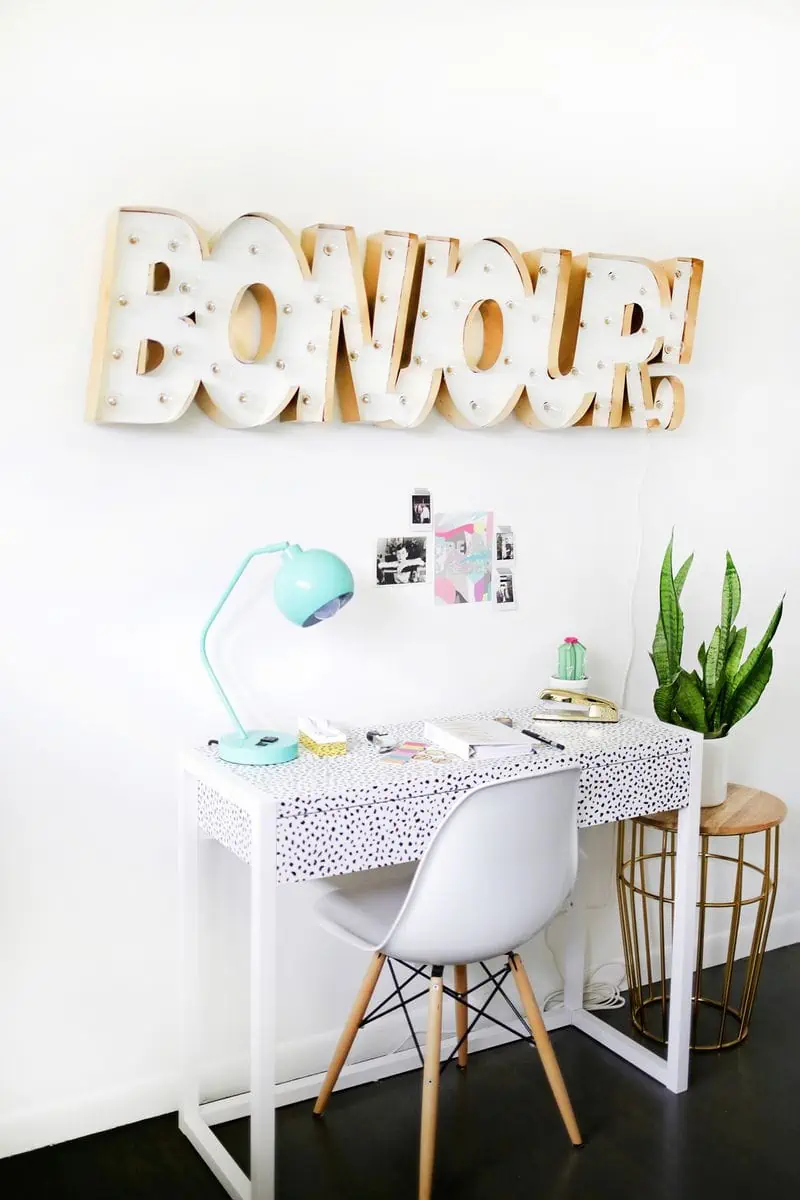
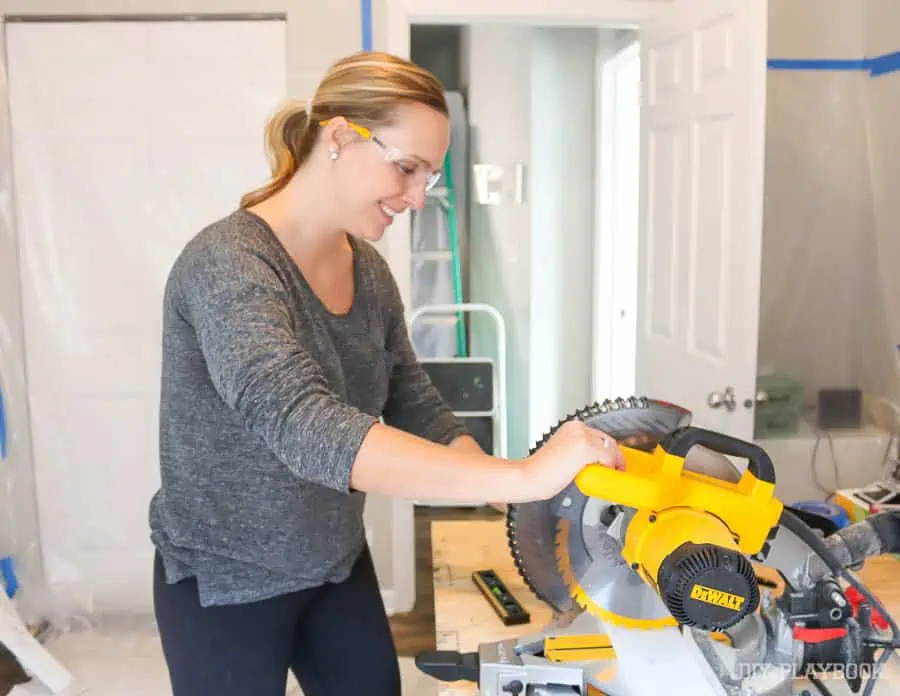
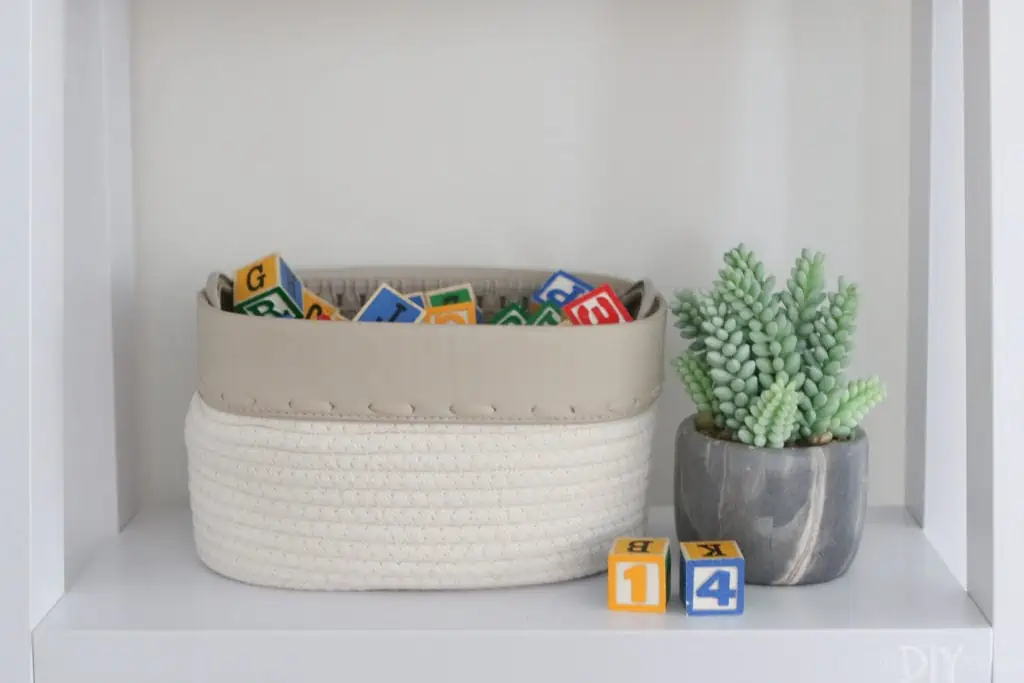
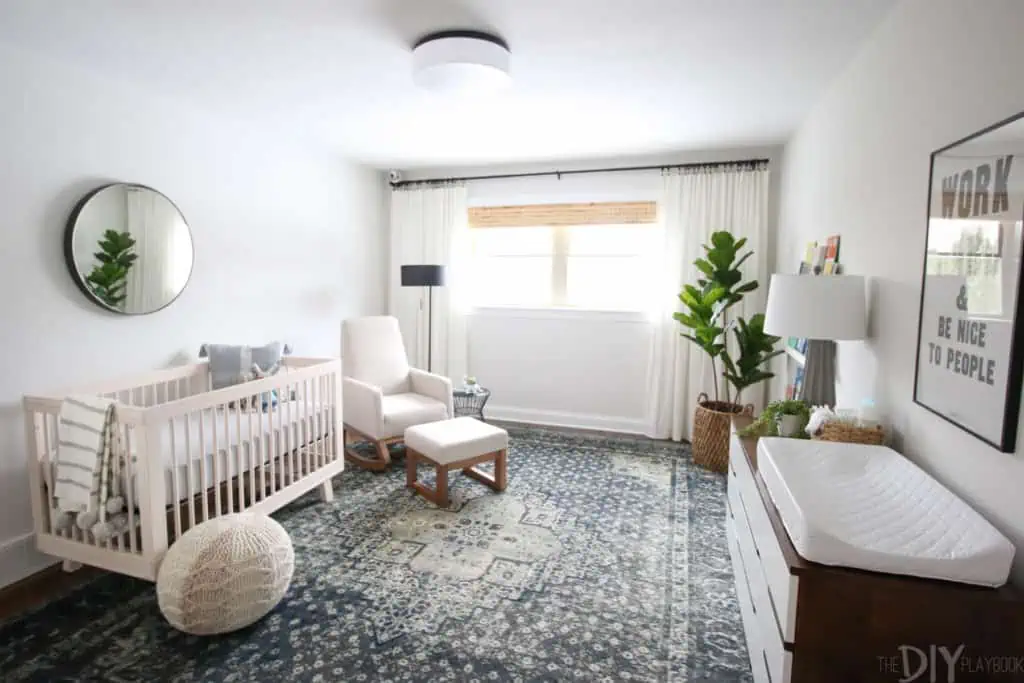
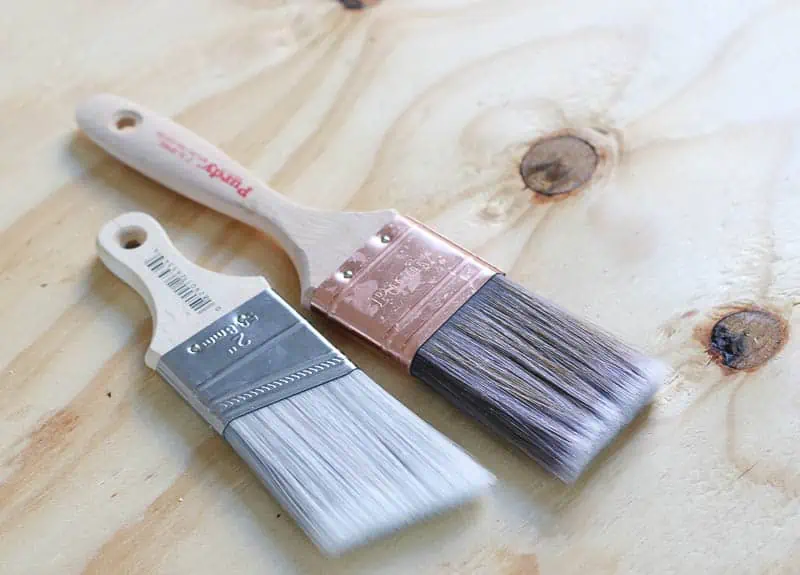


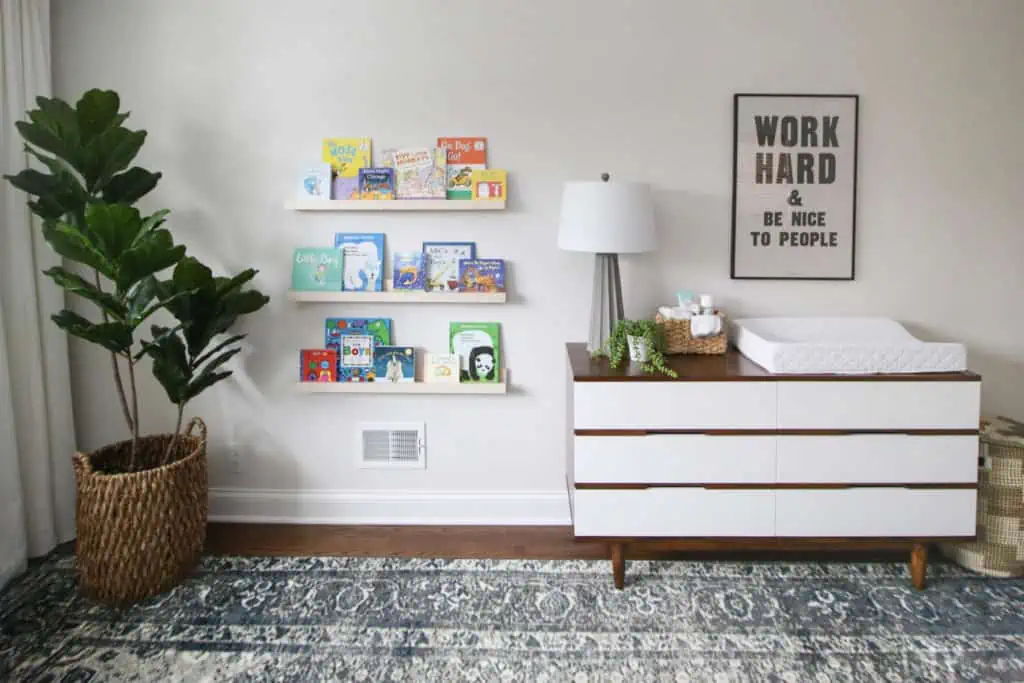
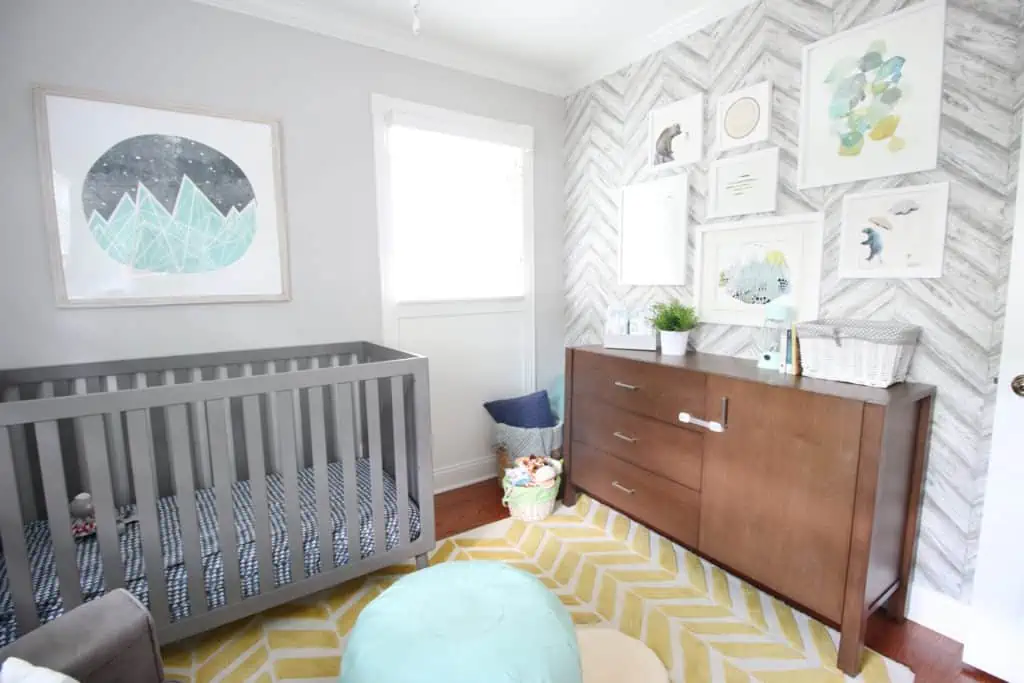



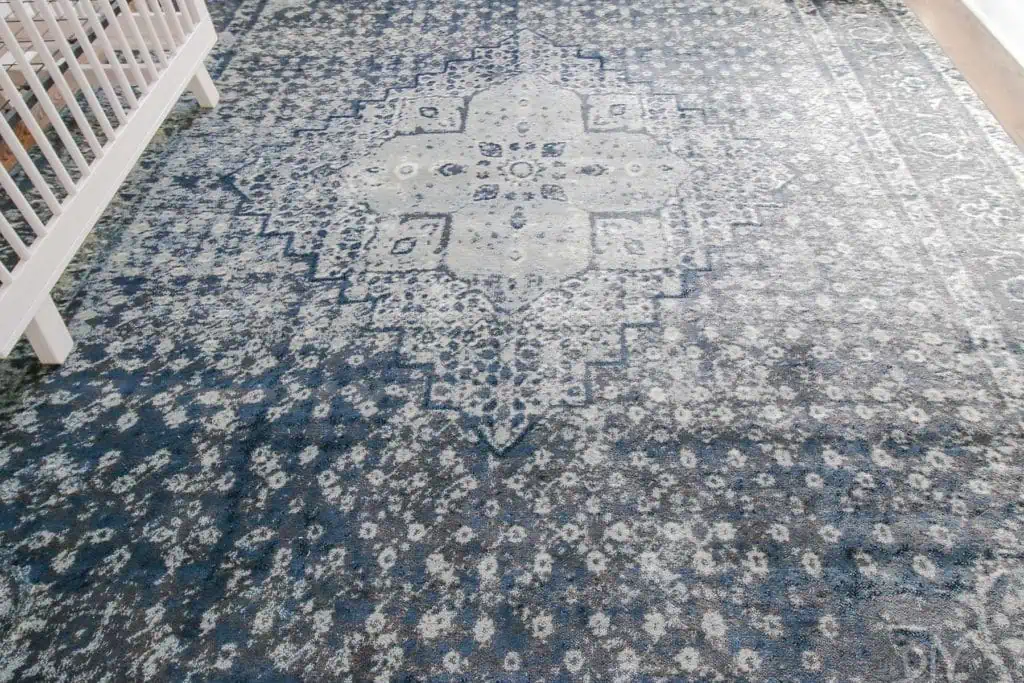
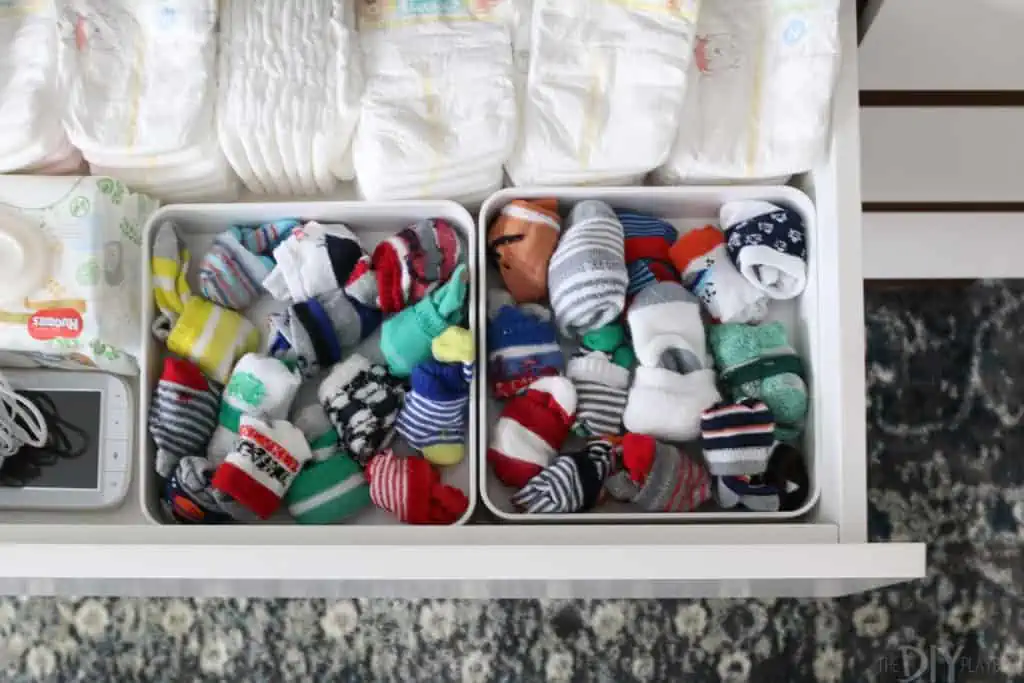
 The first thing we did was add hooks to the walls. Today, they work for a baby’s towel, but later on that same hook will be a perfect spot for your little one’s book bag.
The first thing we did was add hooks to the walls. Today, they work for a baby’s towel, but later on that same hook will be a perfect spot for your little one’s book bag.